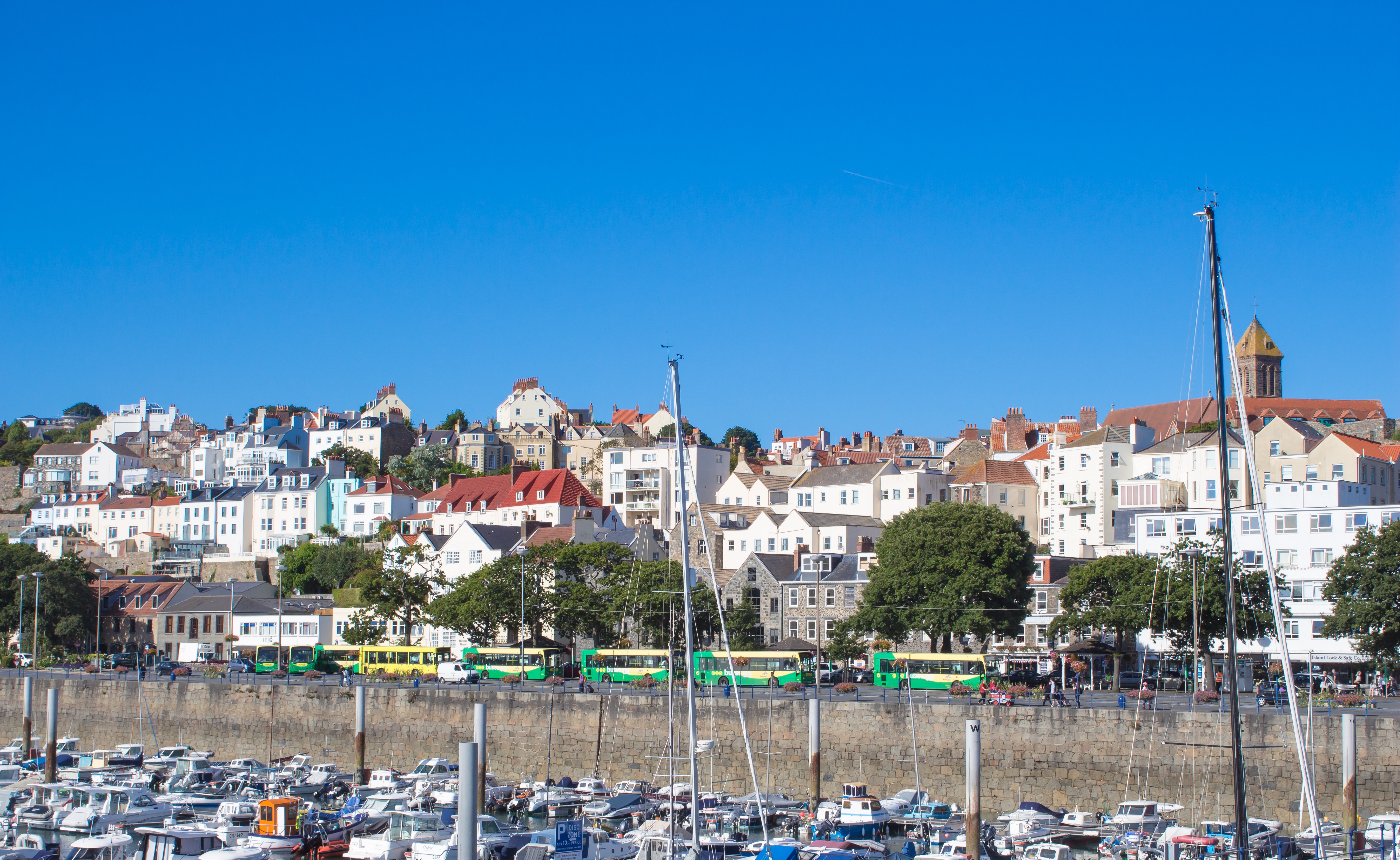
Wonders of Europe: Bordeaux to London
Wonders of Europe: Bordeaux to London
Cruise overview
WHY BOOK WITH US?
- ✔ The Deluxe Cruises’ team has extensive experience in ultra-luxury cruising.
- ✔ Call now to speak to our helpful and experienced Cruise Concierge team.
- ✔ Enjoy our Unique Deluxe Cruises Bonus for substantial savings.
- ✔ Our team will tailor your holiday to your exacting requirements.
- ✔ As agents, we work under the protection of each cruise lines ABTA / ATOL licences
About Bordeaux
Bordeaux as a whole, rather than any particular points within it, is what you'll want to visit in order to understand why Victor Hugo described it as Versailles plus Antwerp, and why the painter Francisco de Goya, when exiled from his native Spain, chose it as his last home (he died here in 1828). The capital of southwest France and the region's largest city, Bordeaux remains synonymous with the wine trade: wine shippers have long maintained their headquarters along the banks of the Garonne, while buyers from around the world arrive for the huge biennial Vinexpo show (held in odd-number years).Bordeaux is, admittedly, a less exuberant city than many others in France, but lively and stylish elements are making a dent in its conservative veneer. The cleaned-up riverfront is said by some, after a bottle or two, to exude an elegance reminiscent of St. Petersburg, and that aura of 18th-century élan also permeates the historic downtown sector—“le vieux Bordeaux"—where fine shops invite exploration. To the south of the city center are old docklands undergoing renewal—one train station has now been transformed into a big multiplex movie theater—but the area is still a bit shady. To get a feel for the historic port of Bordeaux, take the 90-minute boat trip that leaves Quai Louis-XVIII every weekday afternoon, or the regular passenger ferry that plies the Garonne between Quai Richelieu and the Pont d'Aquitaine in summer. A nice time to stroll around the city center is the first Sunday of the month, when it's pedestrian-only and vehicles are banned.
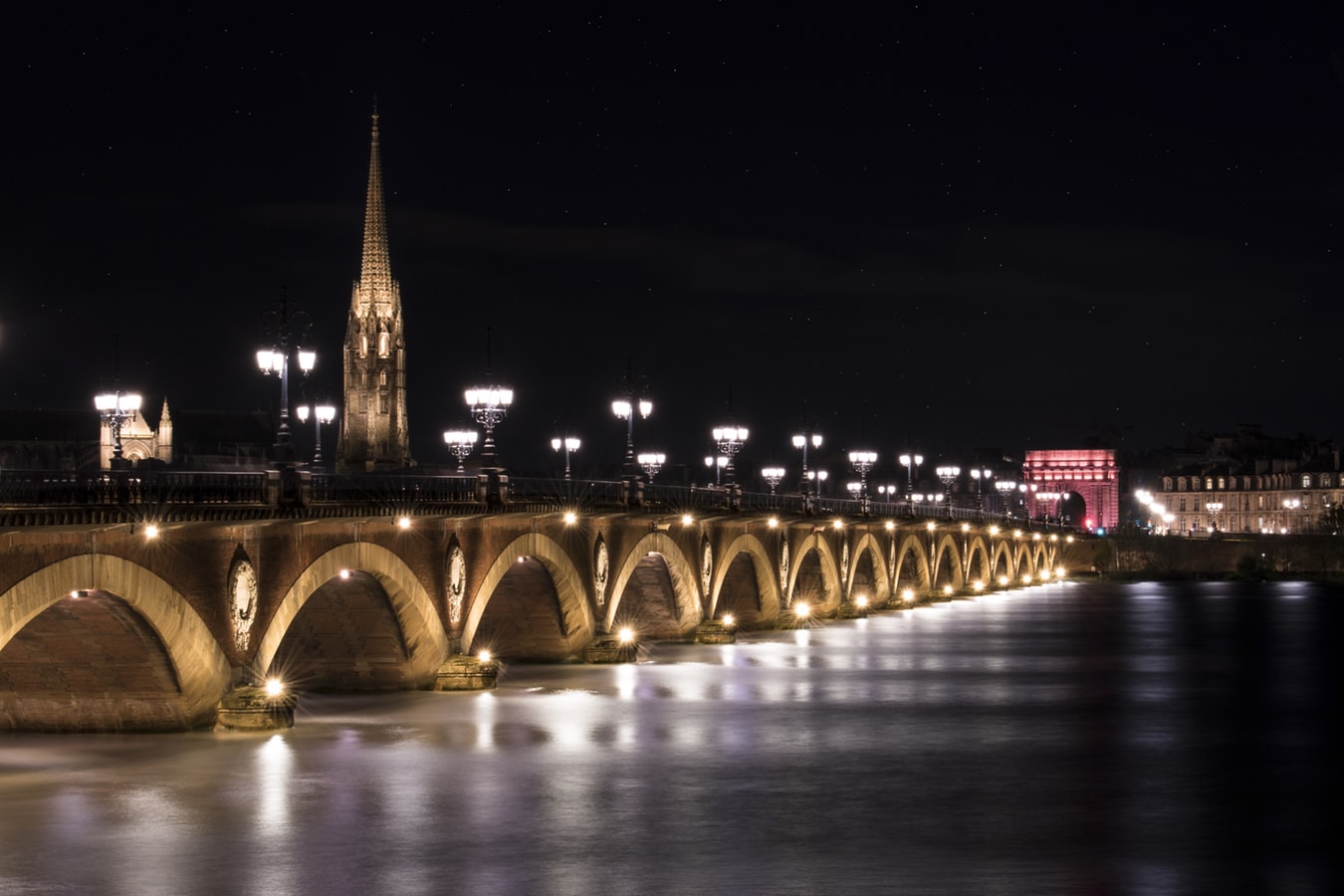
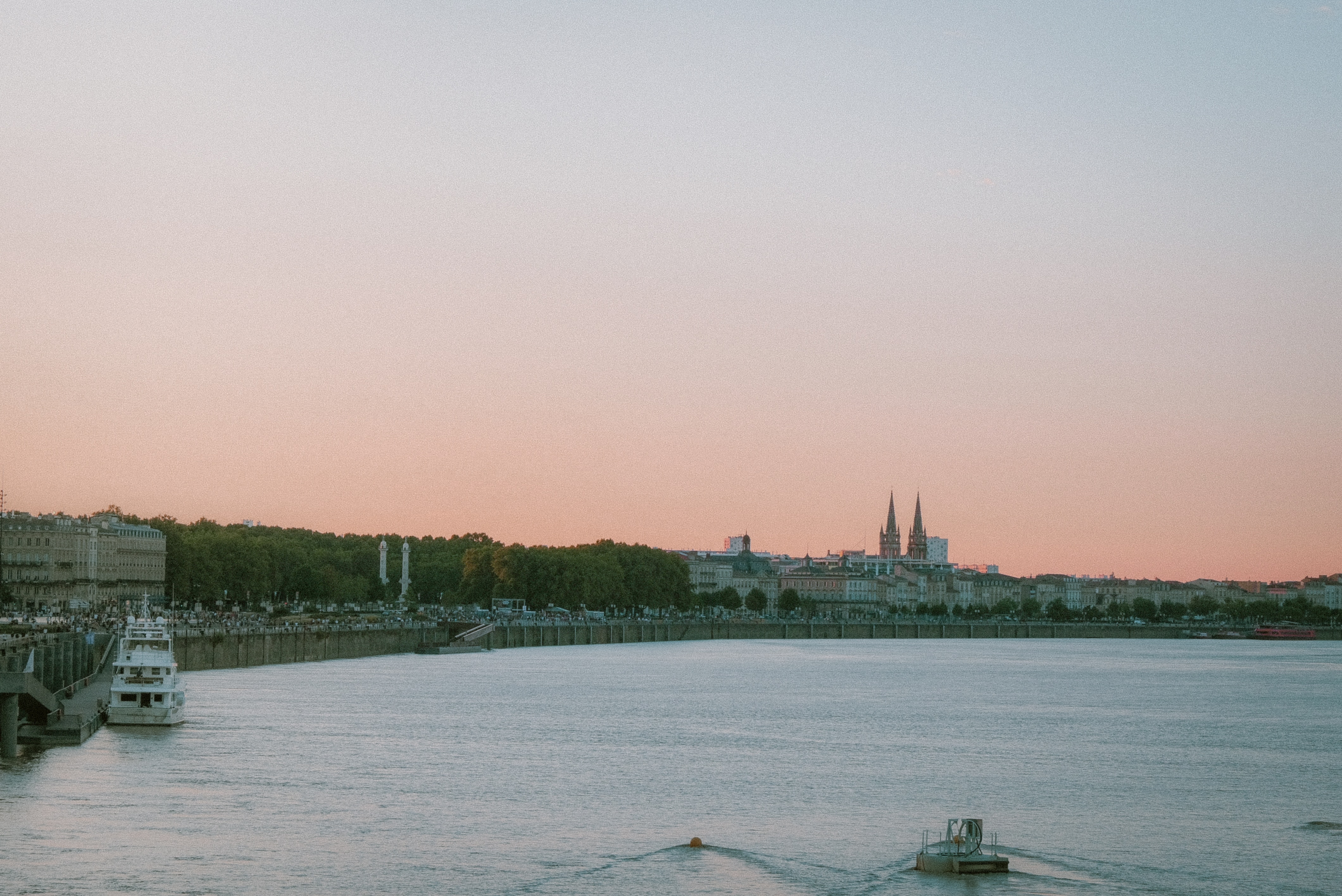
About Bordeaux
Bordeaux as a whole, rather than any particular points within it, is what you'll want to visit in order to understand why Victor Hugo described it as Versailles plus Antwerp, and why the painter Francisco de Goya, when exiled from his native Spain, chose it as his last home (he died here in 1828). The capital of southwest France and the region's largest city, Bordeaux remains synonymous with the wine trade: wine shippers have long maintained their headquarters along the banks of the Garonne, while buyers from around the world arrive for the huge biennial Vinexpo show (held in odd-number years).Bordeaux is, admittedly, a less exuberant city than many others in France, but lively and stylish elements are making a dent in its conservative veneer. The cleaned-up riverfront is said by some, after a bottle or two, to exude an elegance reminiscent of St. Petersburg, and that aura of 18th-century élan also permeates the historic downtown sector—“le vieux Bordeaux"—where fine shops invite exploration. To the south of the city center are old docklands undergoing renewal—one train station has now been transformed into a big multiplex movie theater—but the area is still a bit shady. To get a feel for the historic port of Bordeaux, take the 90-minute boat trip that leaves Quai Louis-XVIII every weekday afternoon, or the regular passenger ferry that plies the Garonne between Quai Richelieu and the Pont d'Aquitaine in summer. A nice time to stroll around the city center is the first Sunday of the month, when it's pedestrian-only and vehicles are banned.


About Belle-Île-en-Mer
Although one might think that a name like “the beautiful island in the sea” might be a little too poetic, artists and painters have come to love the nature of this largest of the Brittany islands. “Les Aiguilles de Port Coton”, a famous painting by Claude Monet, depicts the wild southern coast and rocks exposed to wind and waves. The island has a ‘soft’ side too. Its northern shore has two ports and long sandy beaches. At the port of Le Palais is one of the historical gems of the island. Mentioned by Alexandre Dumas in his second book about the Three Musketeers, the Citadelle de Belle Ile had great strategic importance as access to the south of Brittany was controlled by Belle Ile and its smaller neighbours Houat and Hoed. The beautifully maintained fort is now a museum. There are other spectacular and unique fortifications along the island’s shore.
About Concarneau
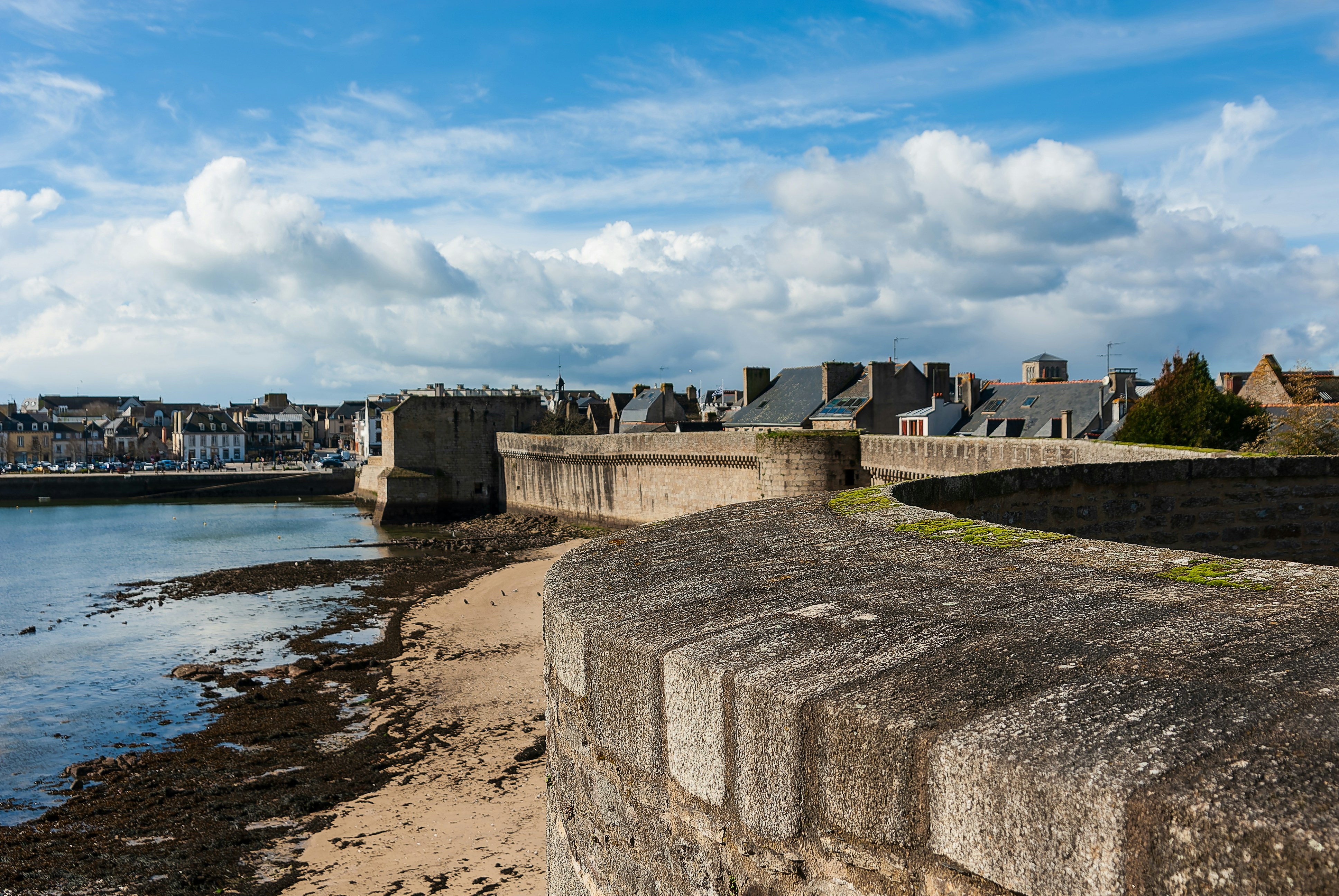
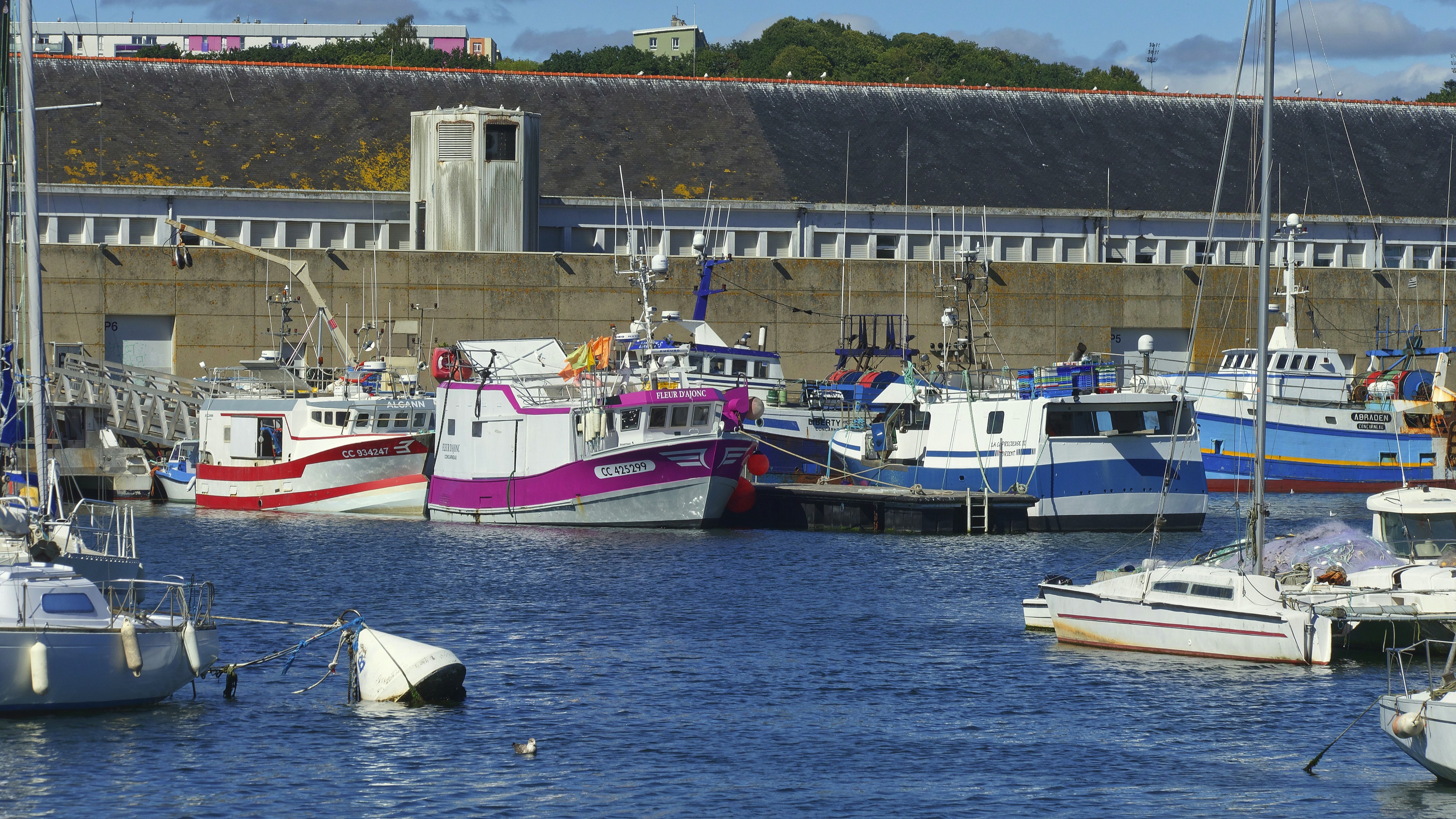
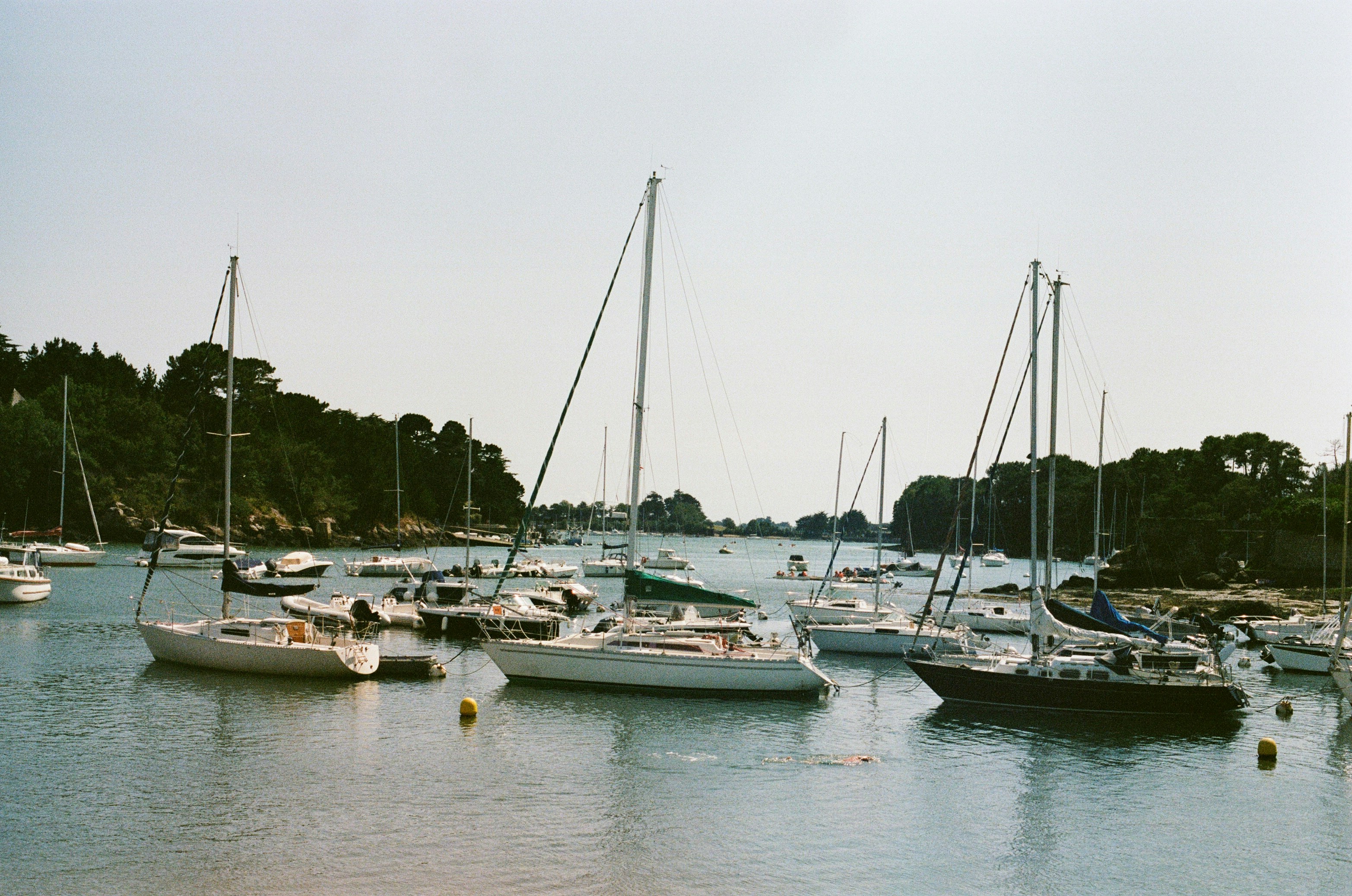
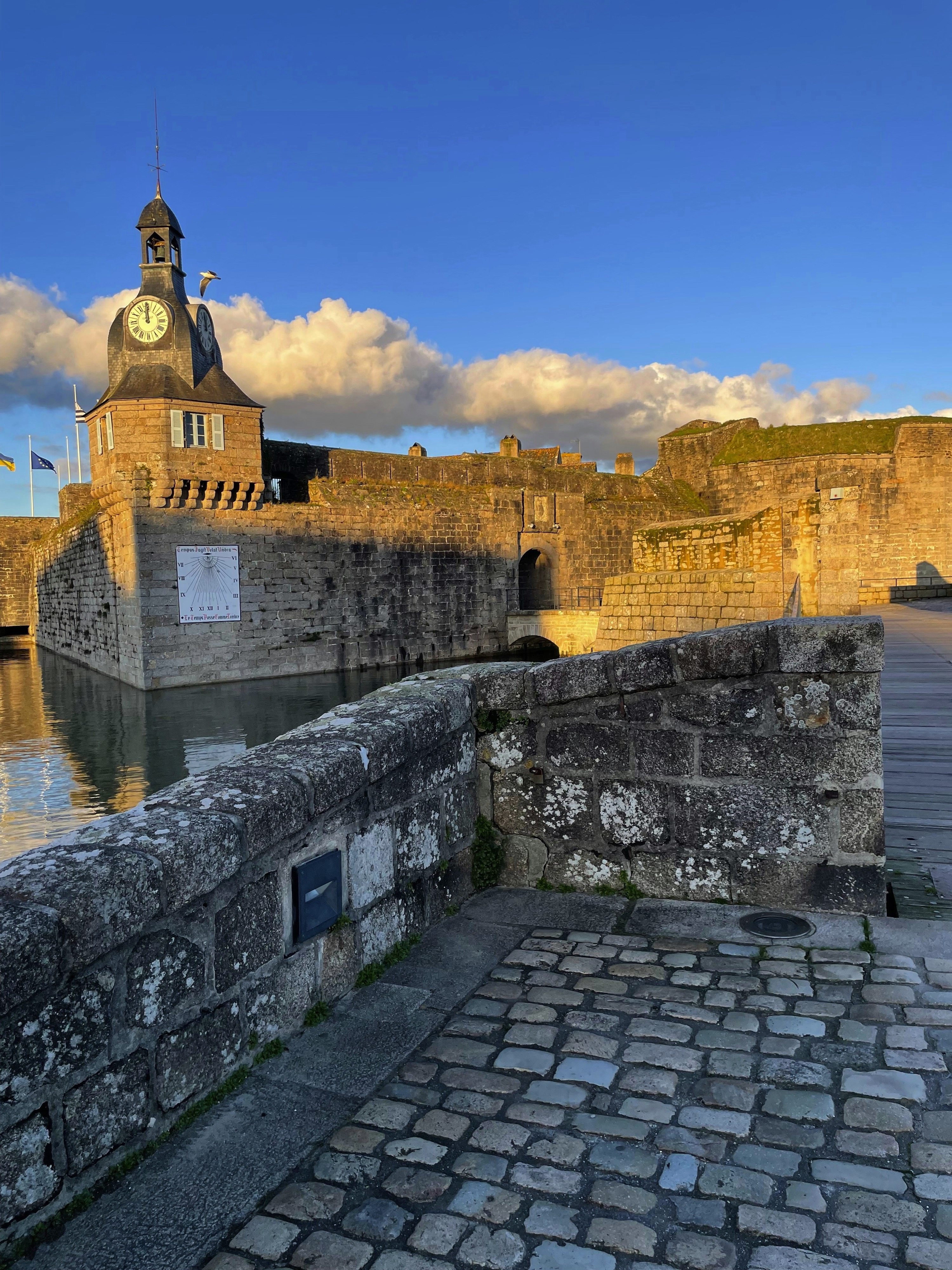
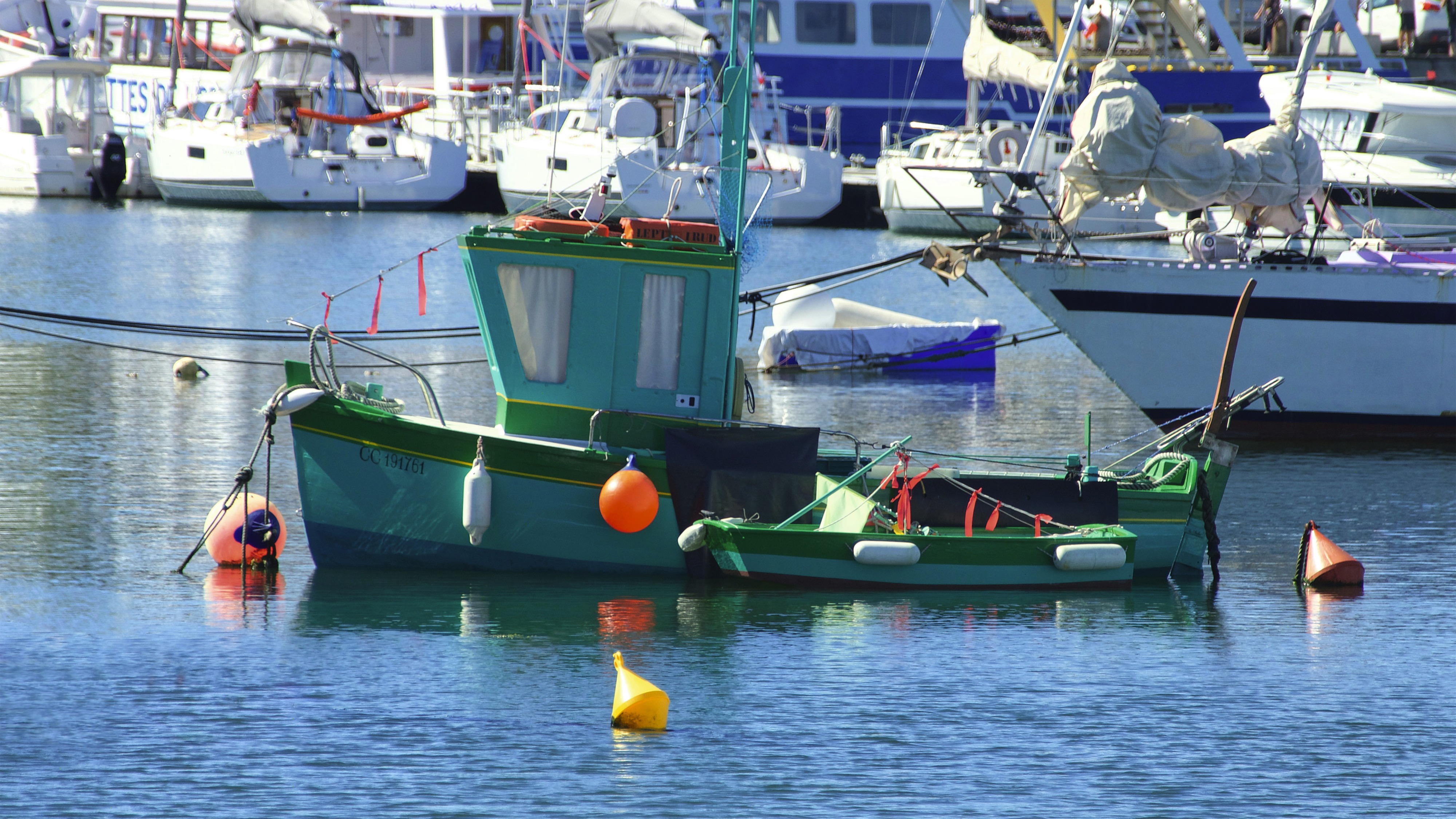
About Concarneau





About Hugh Town, Saint Mary's, Isles of Scilly
About Fowey
Nestled in the mouth of a wooded estuary, Fowey (pronounced Foy) is still very much a working china-clay port as well as a focal point for the sailing fraternity. Increasingly, it's also a favored home of the rich and famous. Good and varied dining and lodging options abound; these are most in demand during Regatta Week in mid- to late August and the annual Fowey Festival of Words and Music in mid-May. The Bodinnick and Polruan ferries take cars as well as foot passengers across the river for the coast road on to Looe.A few miles west of Fowey are a pair of very different gardens: the Eden Project, a futuristic display of plants from around the world, and the Lost Gardens of Heligan, a revitalized reminder of the Victorian age.
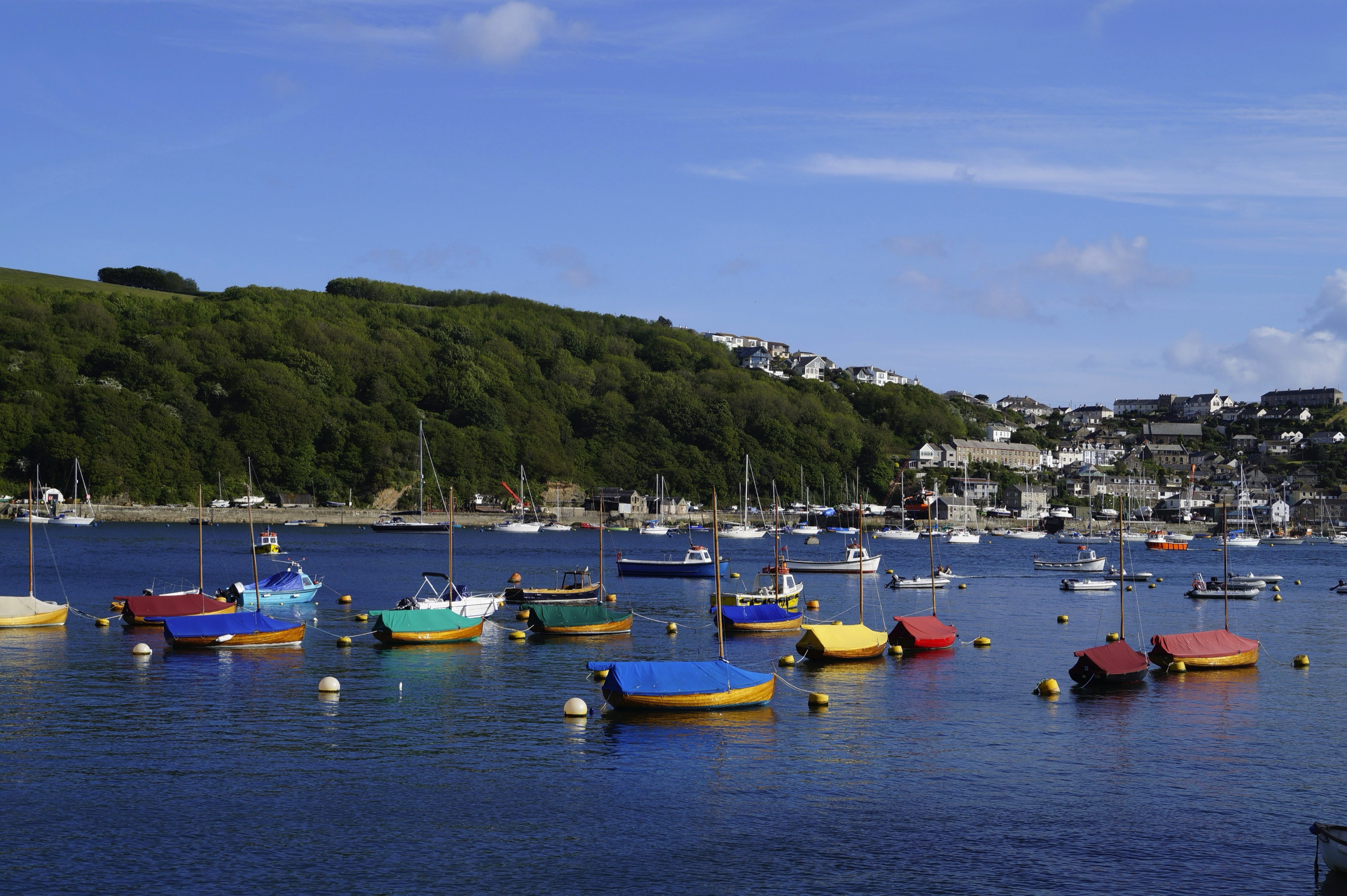
About Saint Peter Port
Cobblestone streets, blooming floral displays, and tiny churches welcome you to this wonderfully pretty harbour. The town of St Peter Port is as pretty as they come, with glowing flower displays painting practically every street corner and window-ledge with colour. As the capital, and main port of Guernsey, St Peter Port puts all of the island’s gorgeous beaches, wonderful history and inspiring stories at your fingertips. Feel the gut punch of the midday gun firing at Castle Cornet, which stands guard over one of the world's prettiest ports. This 800-year-old, Medieval castle offers staggering views of the harbour from its imposing, craggy island location, and you can look out across to the looming shorelines of the other Channel Islands from its weathered battlements. With four well-tended gardens, and five museums offering a rich overview of Guernsey's history, you’ll want to leave a few hours aside to explore the many treasures that lie within the castle’s walls.

About Poole
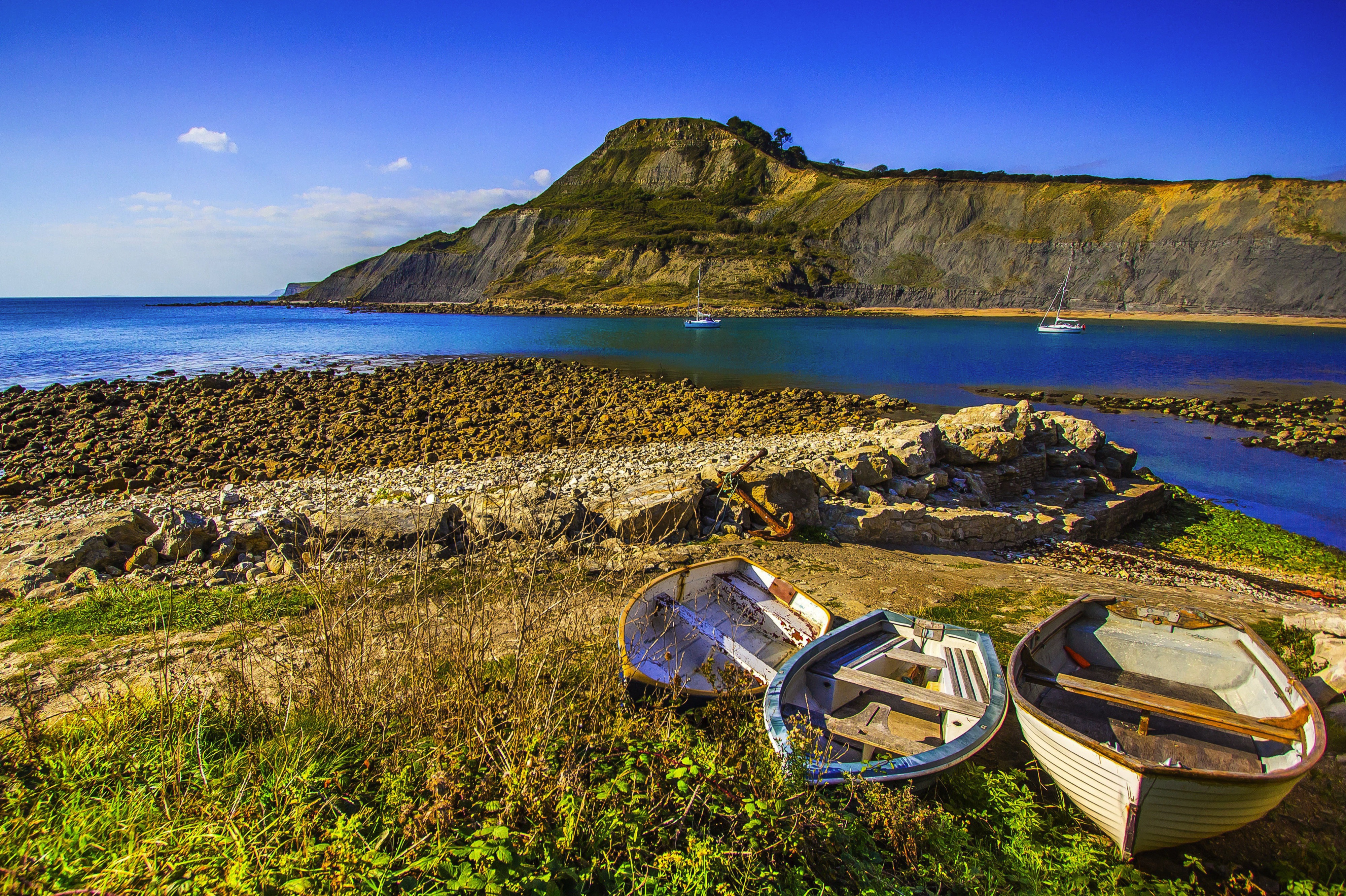
About Honfleur
Honfleur, the most picturesque of the Côte Fleurie's seaside towns, is a time-burnished place with a surplus of half-timber houses and cobbled streets that are lined with a stunning selection of stylish boutiques. Much of its Renaissance architecture remains intact—especially around the 17th-century Vieux Bassin harbor, where the water is fronted on one side by two-story stone houses with low, sloping roofs and on the other by tall slate-topped houses with wooden facades. Maritime expeditions (including some of the first voyages to Canada) departed from here; later, Impressionists were inspired to capture it on canvas. But the town as a whole has become increasingly crowded since the Pont de Normandie opened in 1995. Providing a direct link with Upper Normandy, the world's sixth-largest cable-stayed bridge is supported by two concrete pylons taller than the Eiffel Tower and designed to resist winds of 257 kph (160 mph).
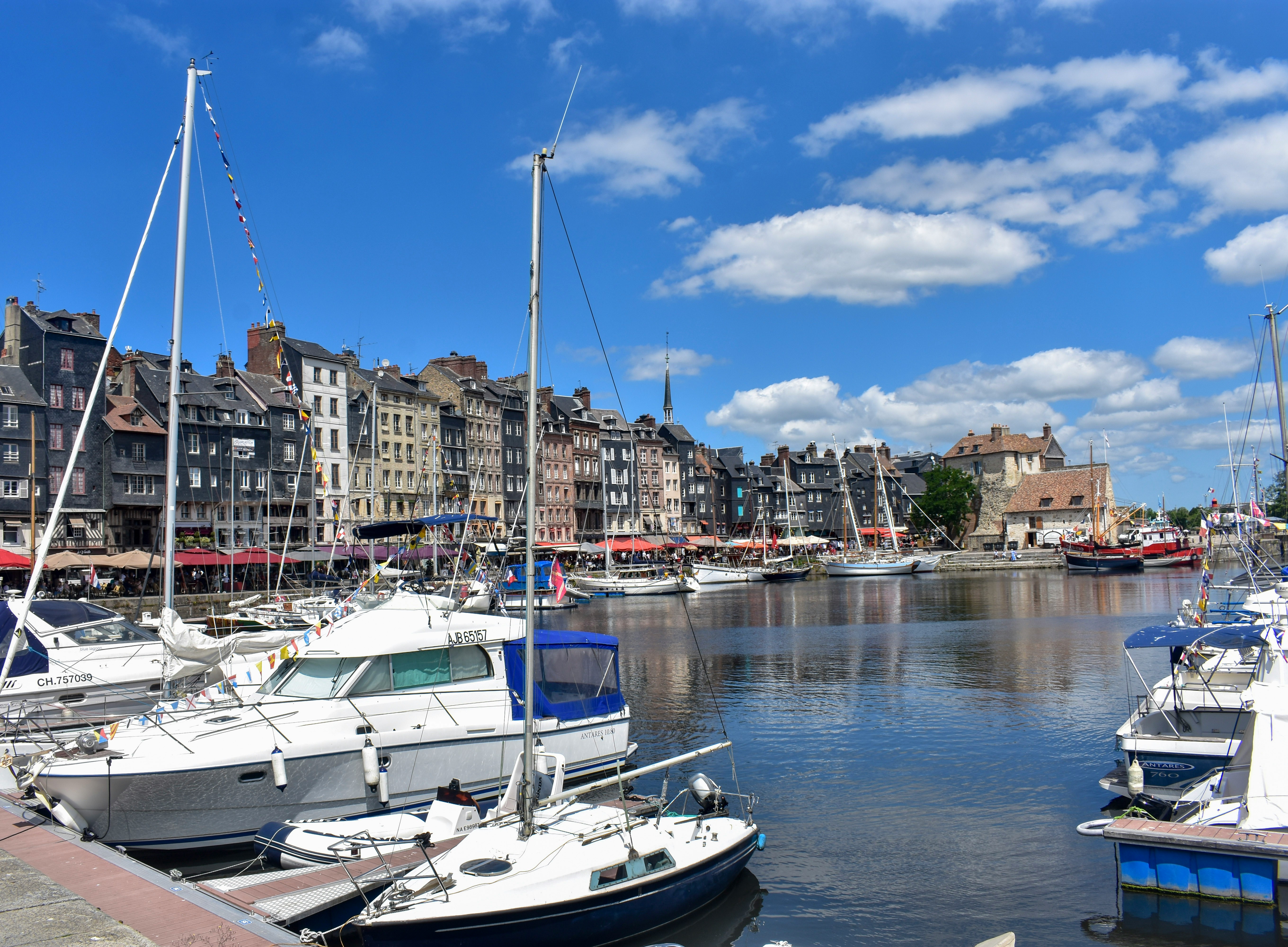
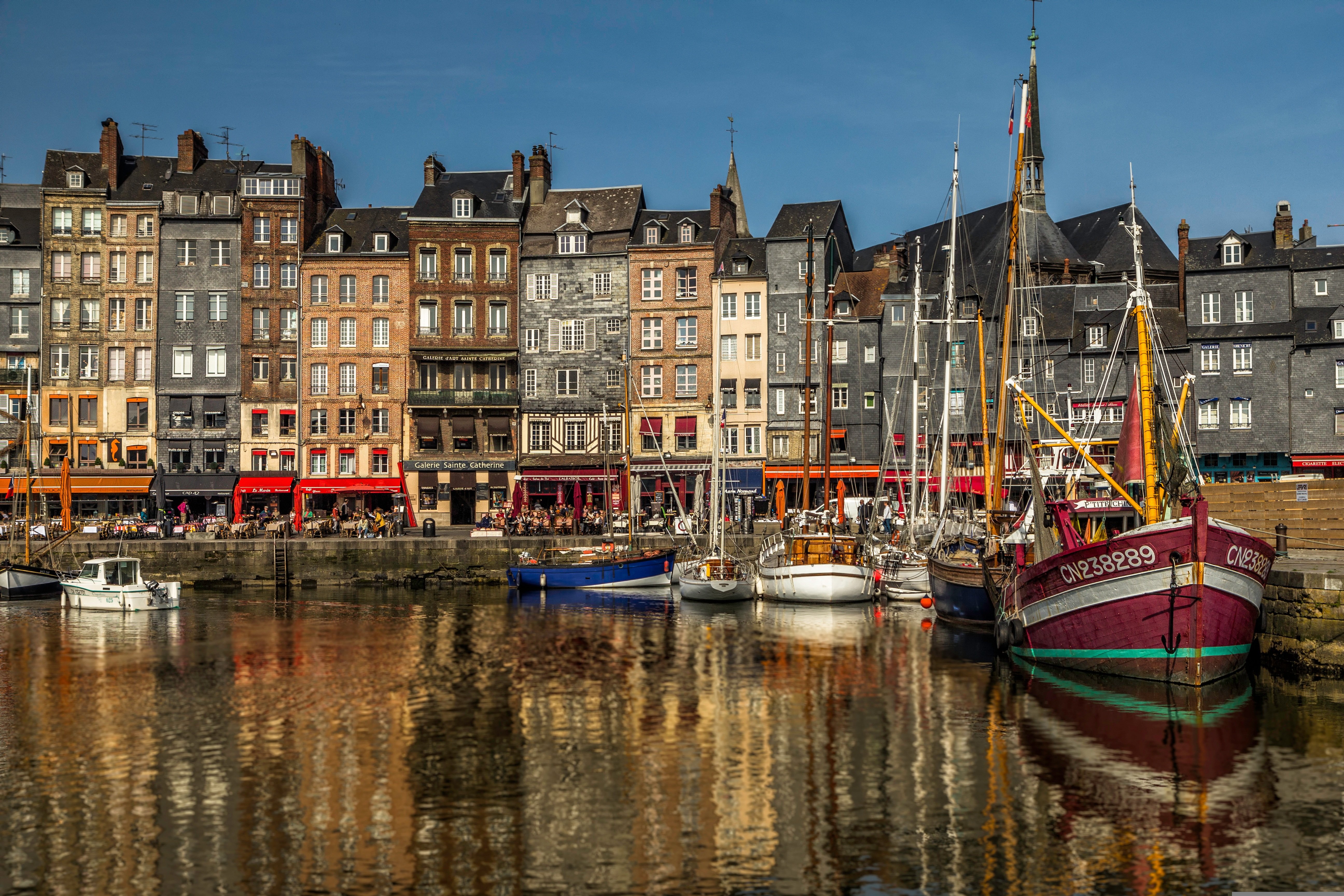

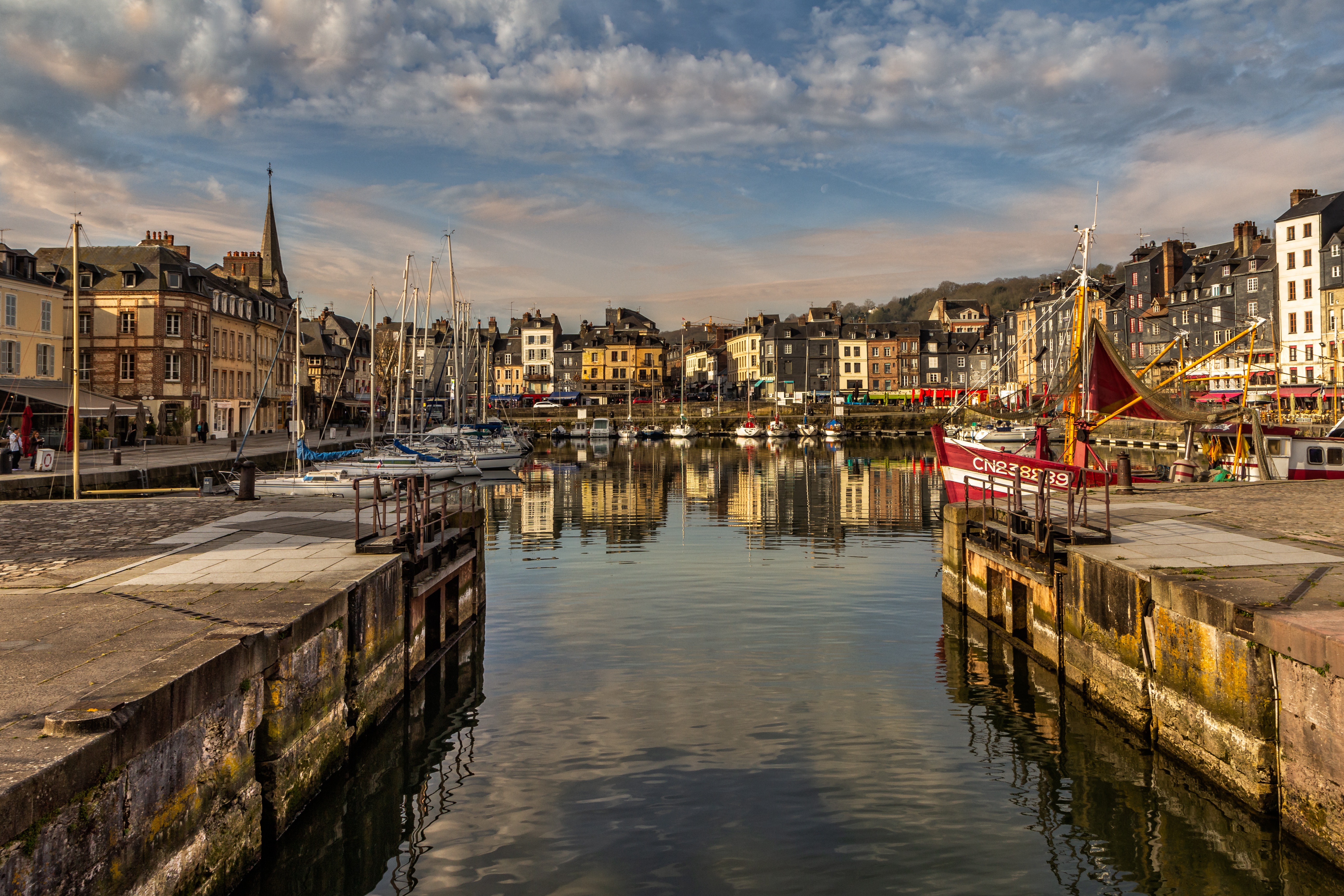
About Oostende (Ostend)
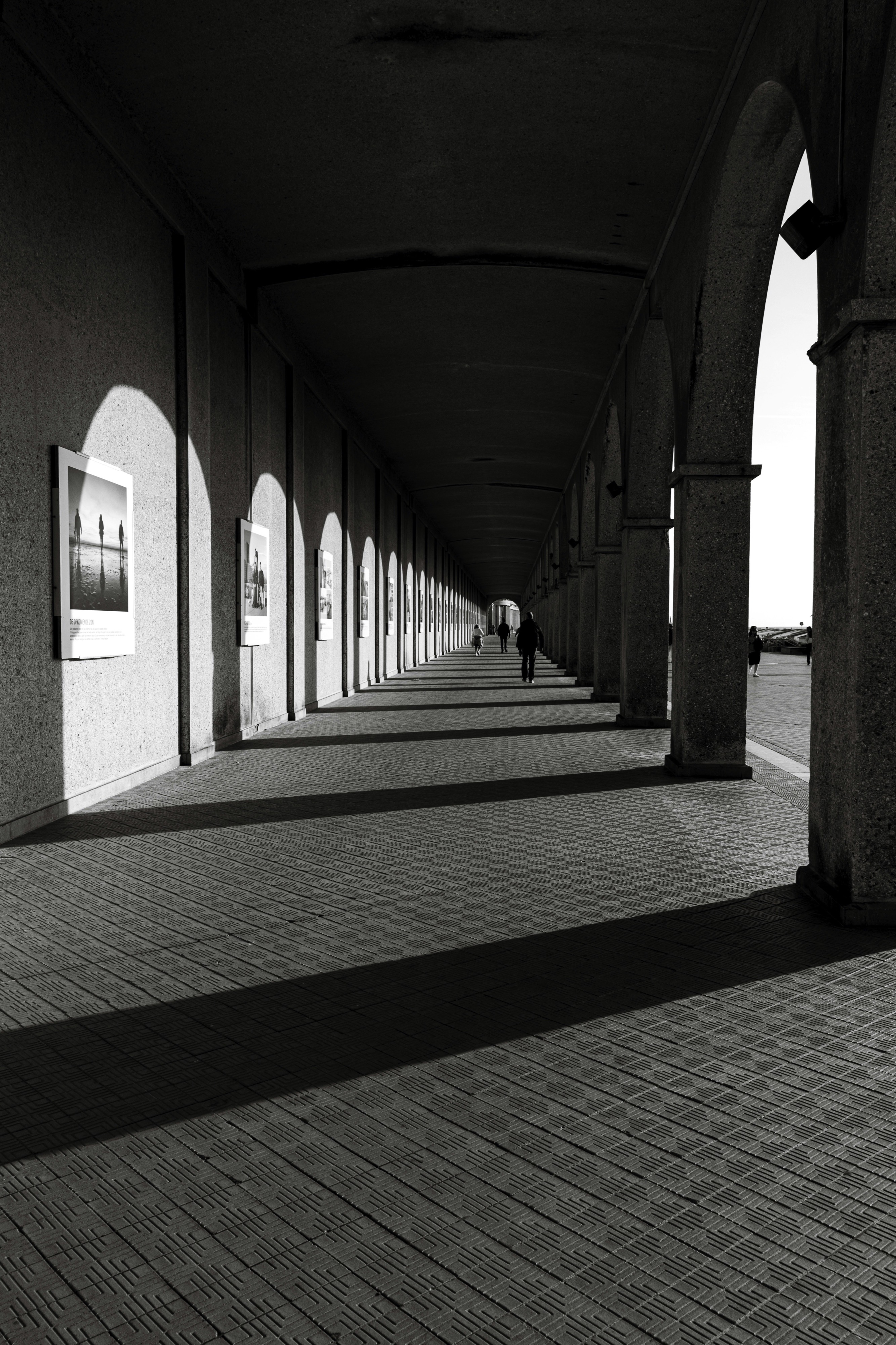
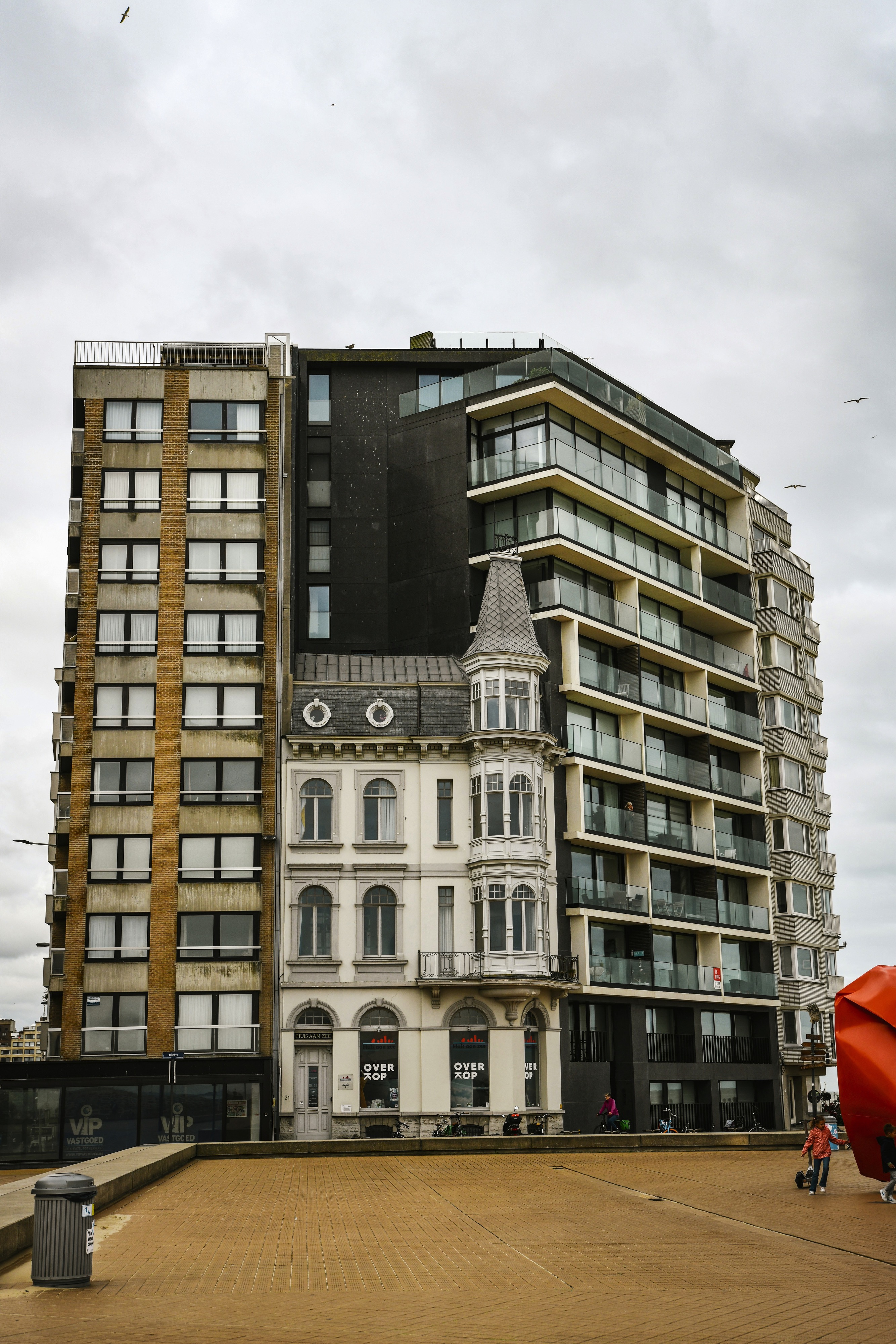
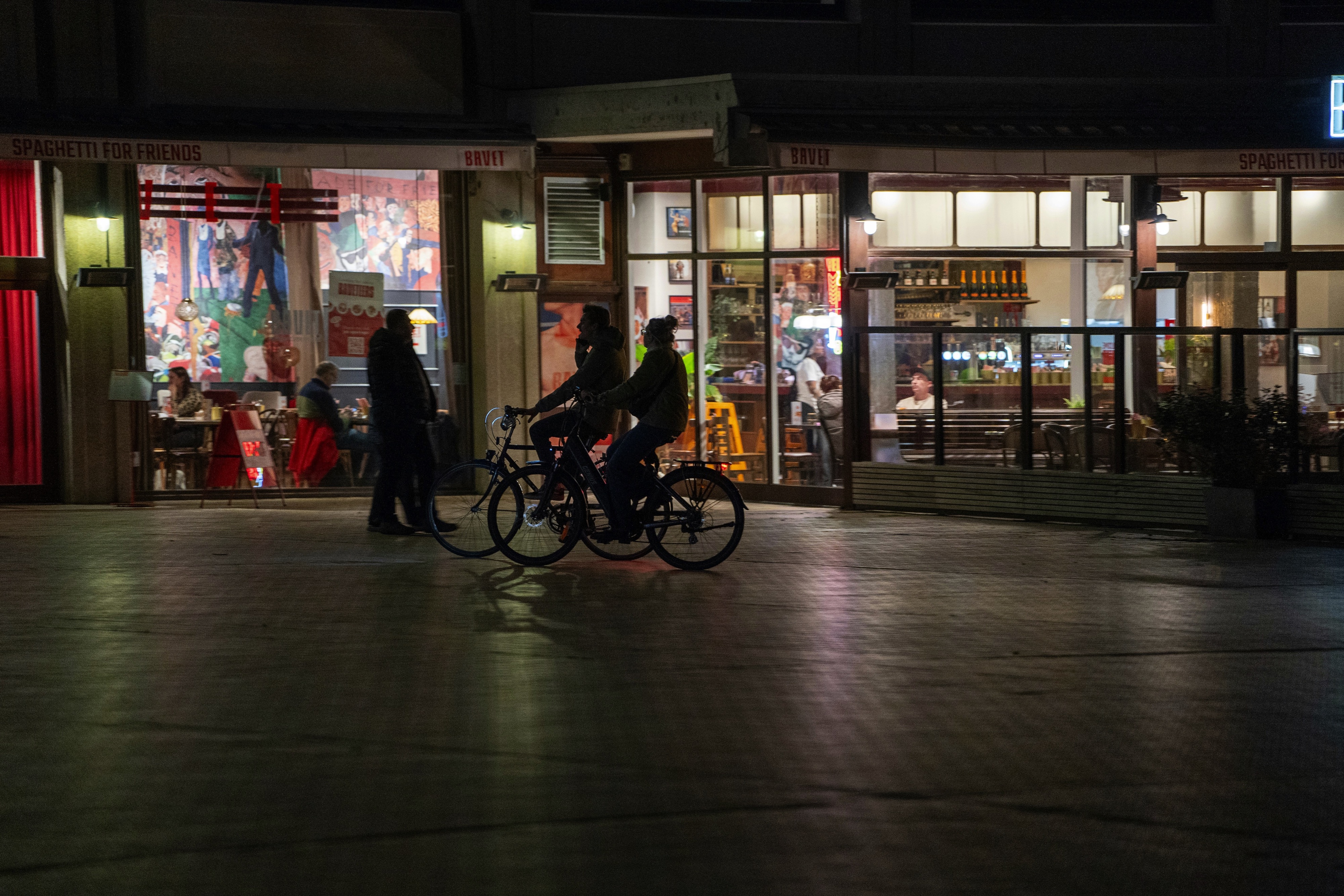


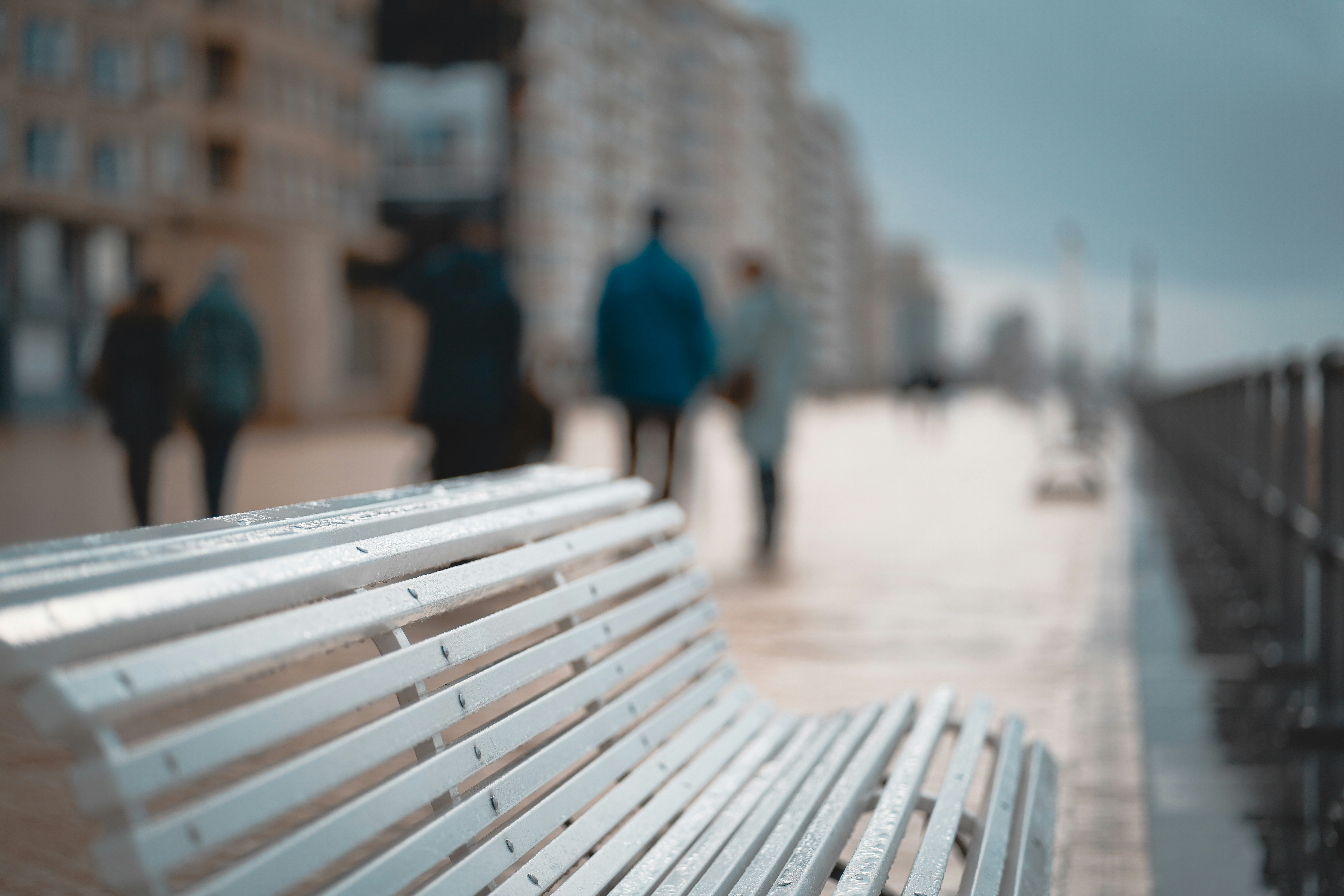


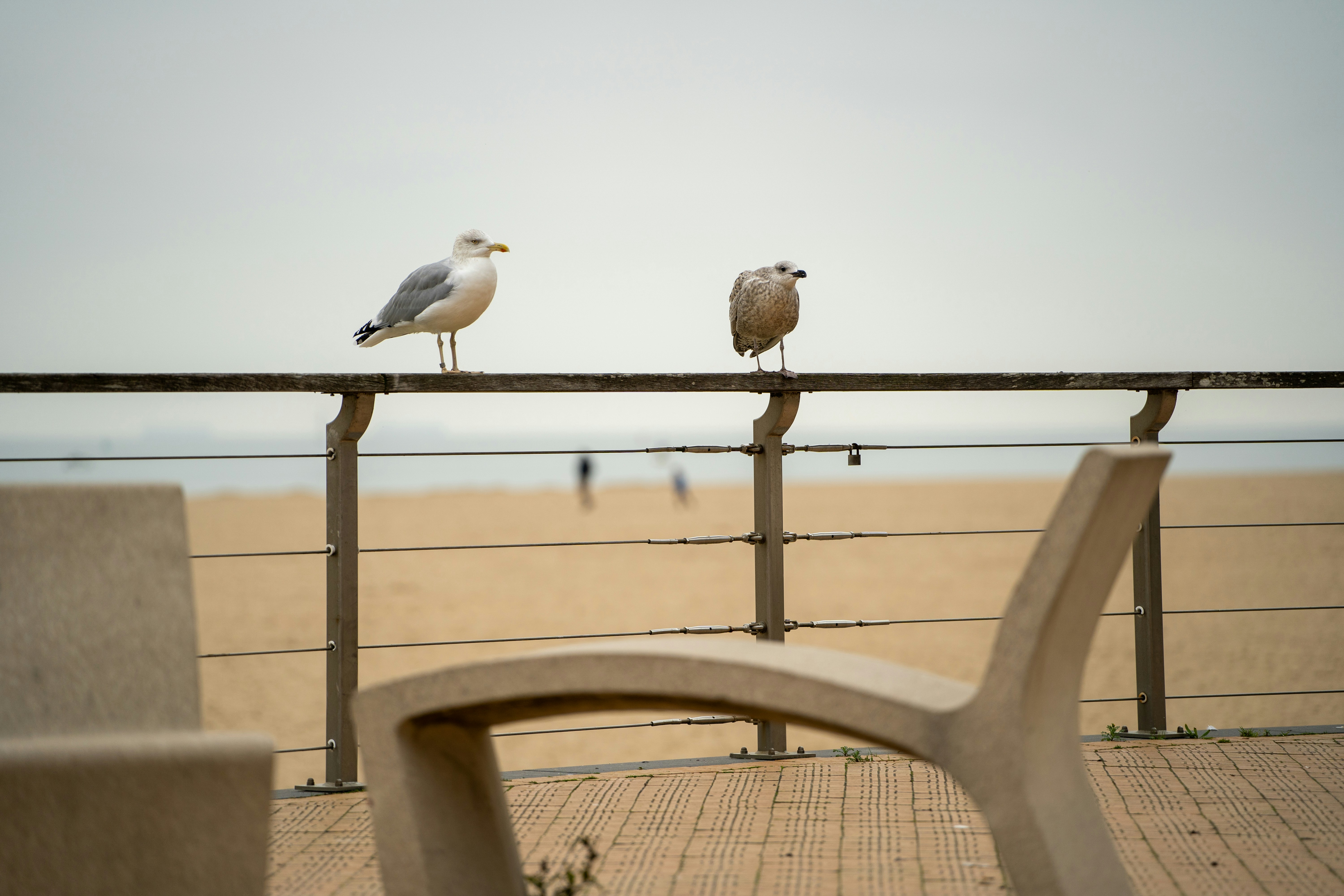

About London (Greenwich)
About 8 miles downstream—which means seaward, to the east—from central London, Greenwich is a small borough that looms large across the world. Once the seat of British naval power, it is not only home to the Old Royal Observatory, which measures time for our entire planet, but also the Greenwich Meridian, which divides the world into two—you can stand astride it with one foot in either hemisphere. Bear in mind that the journey to Greenwich is an event in itself. In a rush, you can take the driverless DLR train—but many opt for arriving by boat along the Thames. This way, you glide past famous sights on the London skyline (there’s a guaranteed spine chill on passing the Tower) and ever-changing docklands, and there’s usually a chirpy Cock-er-ney navigator enlivening the journey with his fun commentary. A visit to Greenwich feels like a trip to a rather elegant seaside town—albeit one with more than its fair share of historic sites. The grandiose Old Royal Naval Hospital, designed by Christopher Wren, was originally a home for veteran sailors. Today it’s a popular visitor attraction, with a more glamorous second life as one of the most widely used movie locations in Britain. Greenwich was originally home to one of England's finest Tudor palaces, and the birthplace of Henry VIII, Elizabeth I, and Mary I. Inigo Jones built what is considered the first "classical" building in England in 1616—the Queen's House, which now houses a collection of fine art. Britain was the world’s preeminent naval power for over 500 years, and the excellent National Maritime Museum> details that history in an engaging way. Its prize exhibits include the coat worn by Admiral Lord Nelson (1758–1805) in his final battle—bullet hole and all. The 19th-century tea clipper Cutty Sark was nearly destroyed by fire in 2007, but reopened in 2012 after a painstaking restoration. Now it’s more pristine than ever, complete with an impressive new visitor center. Greenwich Park, London's oldest royal park, is still home to fallow red deer, just as it has been since they were first introduced here for hunting by Henry VIII. The Ranger's House now houses a private art collection, next door to a beautifully manicured rose garden. Above it all is the Royal Observatory, where you can be in two hemispheres at once by standing along the Greenwich Meridian Line, before seeing a high-tech planetarium show. Toward north Greenwich, the hopelessly ambitious Millennium Dome has been successfully reborn as the O2 and now hosts major concerts and stand-up comedy gigs. More adventurous visitors can also go Up the O2 on a climbing expedition across the massive domed surface. Meanwhile, those who prefer excursions of a gentler kind may prefer to journey a couple of miles south of the borough, farther out into London’s southern suburbs, to the shamefully underappreciated Eltham Palace. Once a favorite of Henry VIII, parts of the mansion were transformed into an art deco masterpiece during the 1930s.
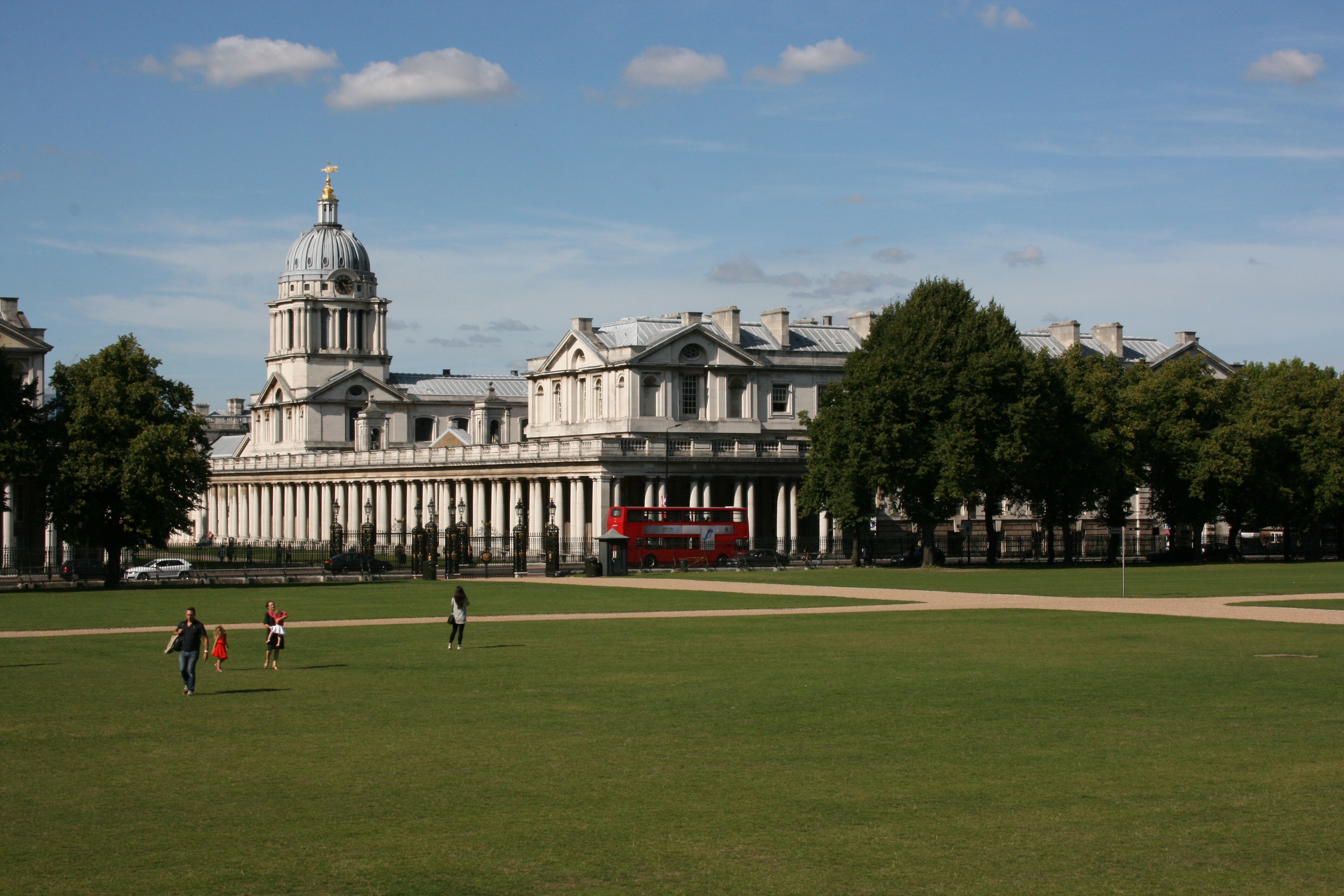
About London (Greenwich)
About 8 miles downstream—which means seaward, to the east—from central London, Greenwich is a small borough that looms large across the world. Once the seat of British naval power, it is not only home to the Old Royal Observatory, which measures time for our entire planet, but also the Greenwich Meridian, which divides the world into two—you can stand astride it with one foot in either hemisphere. Bear in mind that the journey to Greenwich is an event in itself. In a rush, you can take the driverless DLR train—but many opt for arriving by boat along the Thames. This way, you glide past famous sights on the London skyline (there’s a guaranteed spine chill on passing the Tower) and ever-changing docklands, and there’s usually a chirpy Cock-er-ney navigator enlivening the journey with his fun commentary. A visit to Greenwich feels like a trip to a rather elegant seaside town—albeit one with more than its fair share of historic sites. The grandiose Old Royal Naval Hospital, designed by Christopher Wren, was originally a home for veteran sailors. Today it’s a popular visitor attraction, with a more glamorous second life as one of the most widely used movie locations in Britain. Greenwich was originally home to one of England's finest Tudor palaces, and the birthplace of Henry VIII, Elizabeth I, and Mary I. Inigo Jones built what is considered the first "classical" building in England in 1616—the Queen's House, which now houses a collection of fine art. Britain was the world’s preeminent naval power for over 500 years, and the excellent National Maritime Museum> details that history in an engaging way. Its prize exhibits include the coat worn by Admiral Lord Nelson (1758–1805) in his final battle—bullet hole and all. The 19th-century tea clipper Cutty Sark was nearly destroyed by fire in 2007, but reopened in 2012 after a painstaking restoration. Now it’s more pristine than ever, complete with an impressive new visitor center. Greenwich Park, London's oldest royal park, is still home to fallow red deer, just as it has been since they were first introduced here for hunting by Henry VIII. The Ranger's House now houses a private art collection, next door to a beautifully manicured rose garden. Above it all is the Royal Observatory, where you can be in two hemispheres at once by standing along the Greenwich Meridian Line, before seeing a high-tech planetarium show. Toward north Greenwich, the hopelessly ambitious Millennium Dome has been successfully reborn as the O2 and now hosts major concerts and stand-up comedy gigs. More adventurous visitors can also go Up the O2 on a climbing expedition across the massive domed surface. Meanwhile, those who prefer excursions of a gentler kind may prefer to journey a couple of miles south of the borough, farther out into London’s southern suburbs, to the shamefully underappreciated Eltham Palace. Once a favorite of Henry VIII, parts of the mansion were transformed into an art deco masterpiece during the 1930s.

Handcrafted and extraordinary in every way, our Owner’s Penthouse Suites are the ultimate indulgence. Boasting the best views on board, a private spa pool on the spacious terrace, dedicated lounge and dining area, a super-sized bathroom with dual vitality mist showers, and a personalised butler service, it’s a once-in-a-lifetime experience.
Suite Features
At an enormous 195m² in size, the Owner’s Penthouse Suites are located on Deck 9.
Suite names and amenities are the same across both Scenic Eclipse and Scenic Eclipse II, however, both have been thoughtfully curated to suit the cruising experience of these ships.
Spacious Terrace & Pool
Your curved terrace, complete with a personal private spa pool and sun loungers, is the perfect place to indulge in ultra-luxury relaxation.
Super-sized Bathroom
Featuring a super-sized bathroom, your relaxation and comfort are enhanced with a dual steam shower, therapeutic spa bath and guest powder room with dual vanity.
Priority Reservations & Embarkation
Guests in our Owner’s Penthouse Suite will enjoy the privilege of priority dining in the specialty restaurants as well as priority choice of Scenic Freechoice, Scenic Discovery, helicopter^ and submersible^ excursions. VIP embarkation and disembarkation are standard inclusions at the start and finish of your cruise.
Amenities & Features
- Spacious terrace with lounge area, sun loungers and private spa pool
- Spa Day Bed - transforming for in-suite private spa experience
- A separate bedroom with luxury king-size Scenic Slumber Bed and his and hers walk-in wardrobe
- Personalised butler service
- Therapeutic spa bath
- Dual vitality mist shower with colour light therapy
- Guest powder room, dual vanity, VIP amenities and Dyson hairdryer
- Walk-in robe
- In-suite dining with seating for up to eight guests
- A full complimentary mini-bar stocked with wines, Champagnes and spirits personalised to your preference, including illy coffee and specialty teas re-stocked daily
- Canapes and petite fours delivered to your suite
- Complimentary laundry service~
- Guaranteed dining reservations
- Priority choice of shore excursions
- VIP embarkation and disembarkation
- Advanced Heating, Ventilation and Air-Conditioning system (HVAC) provides 100% fresh air
- The highest sound insulation as per the marine class society Bureau Veritas
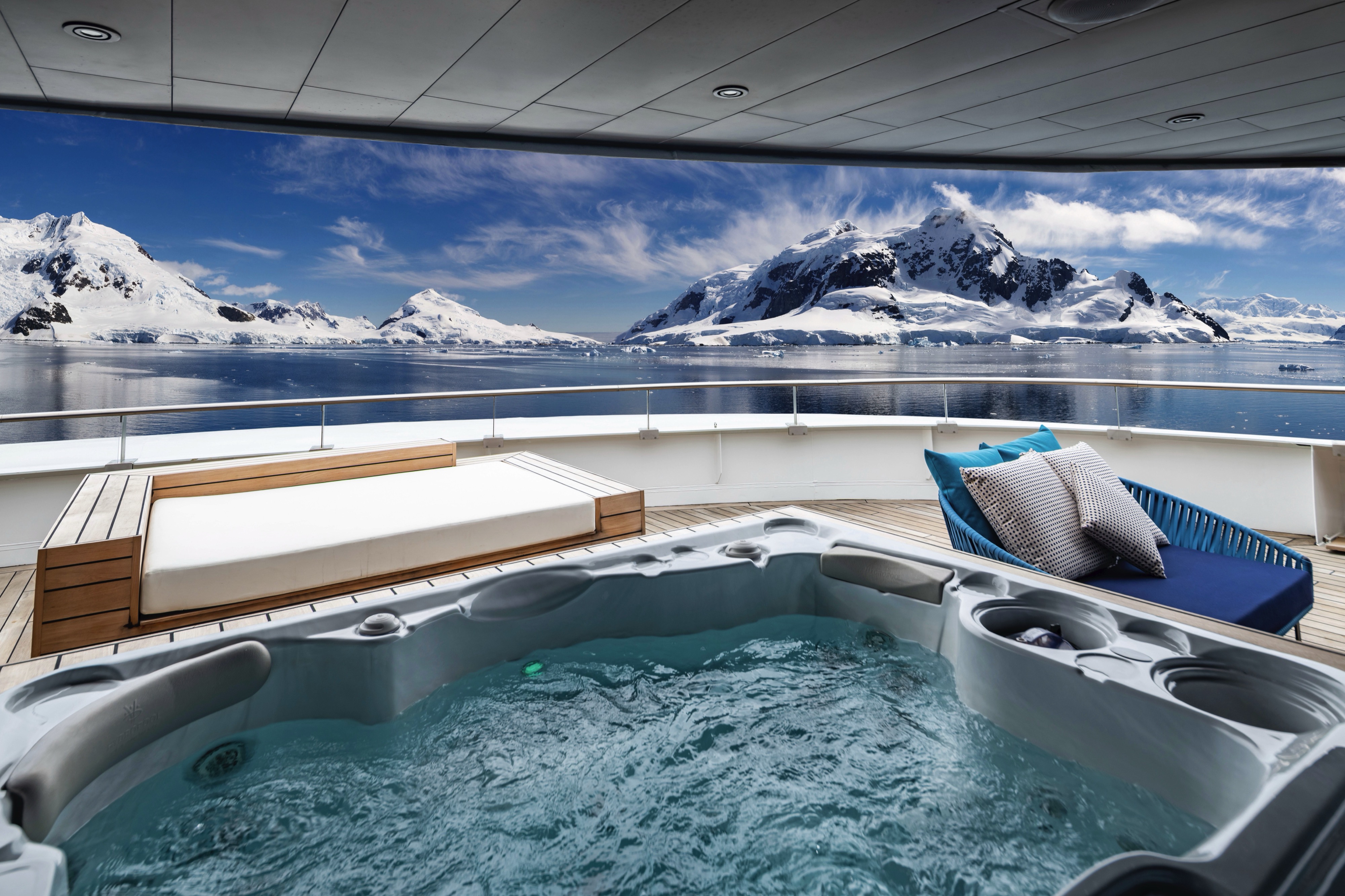
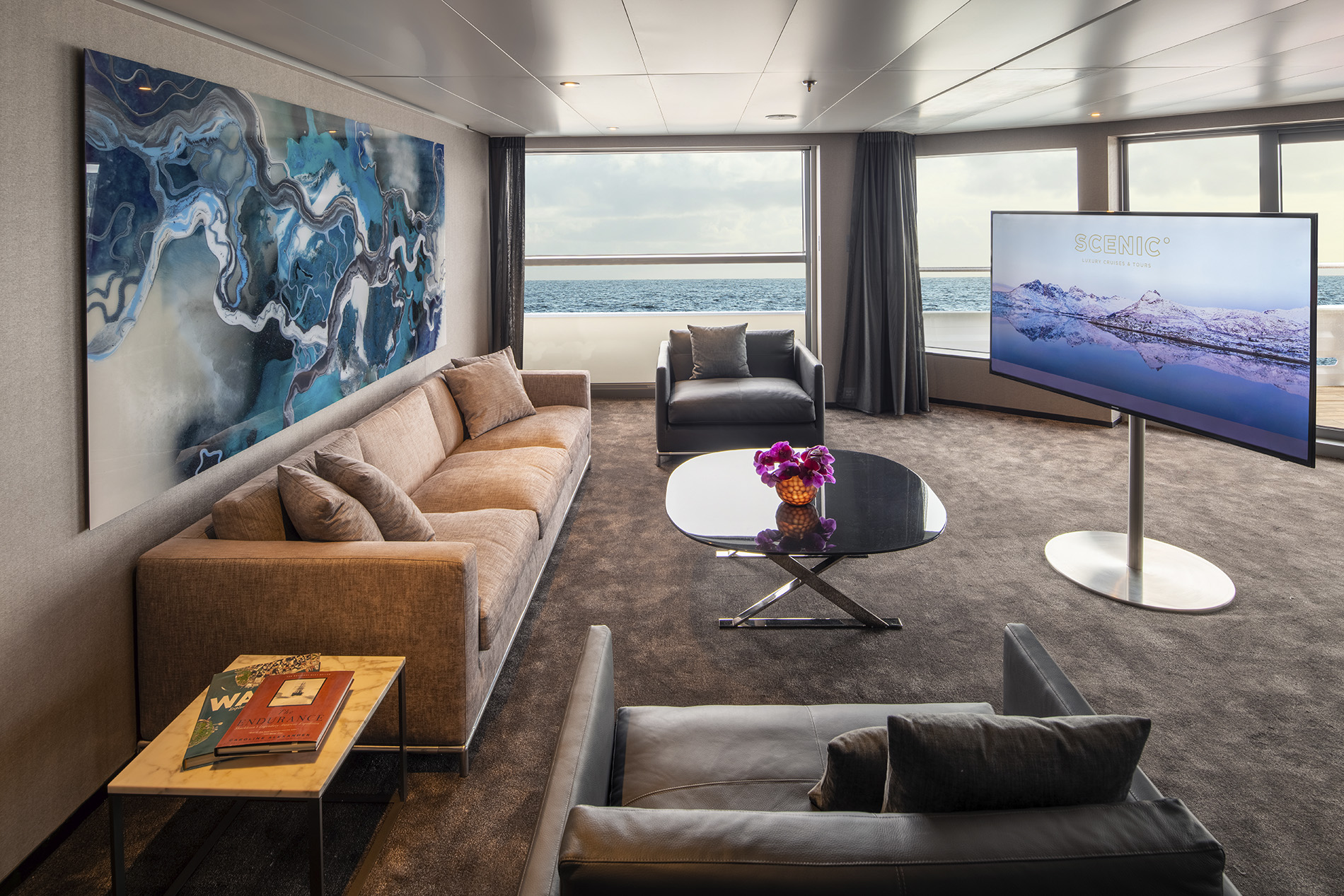
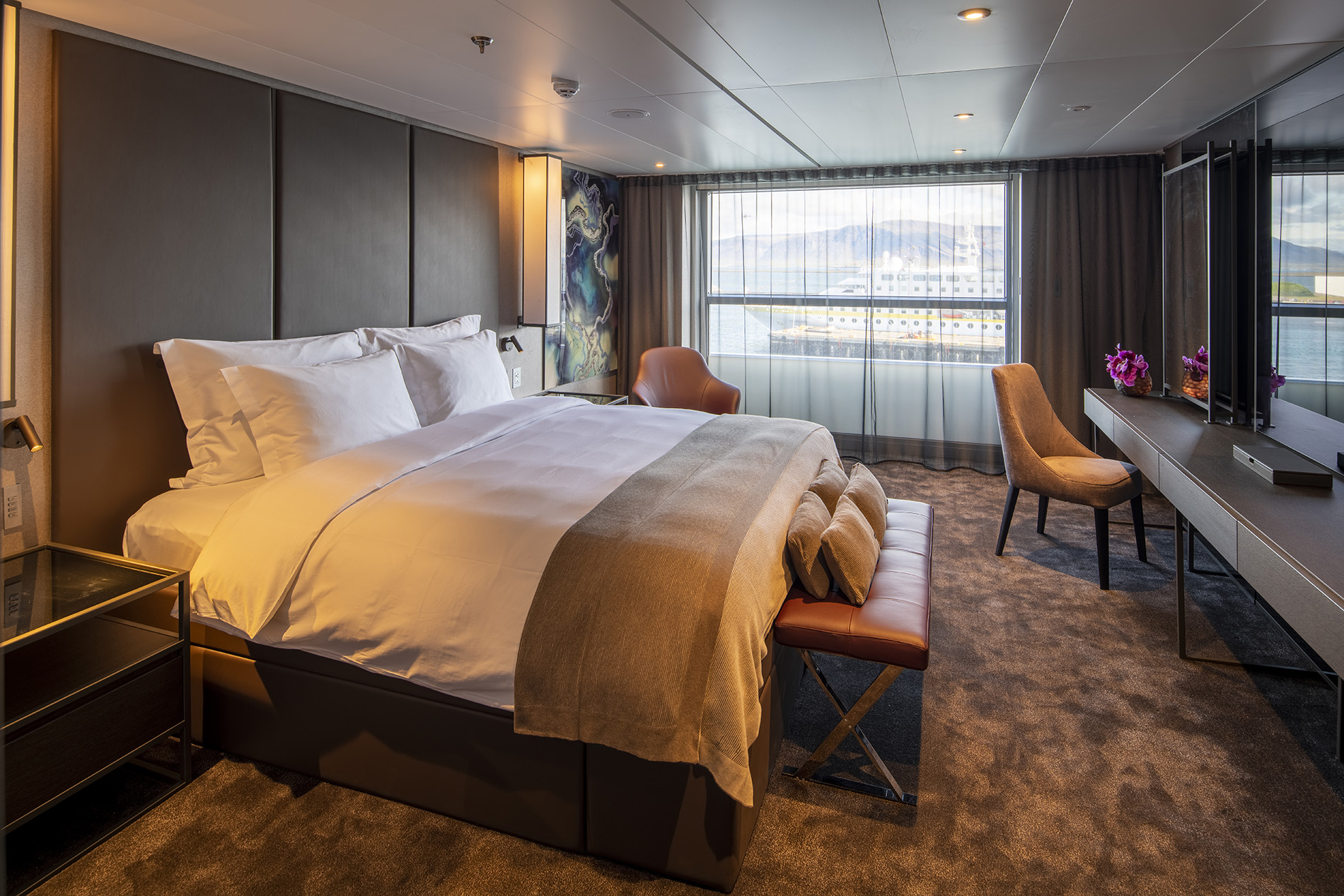
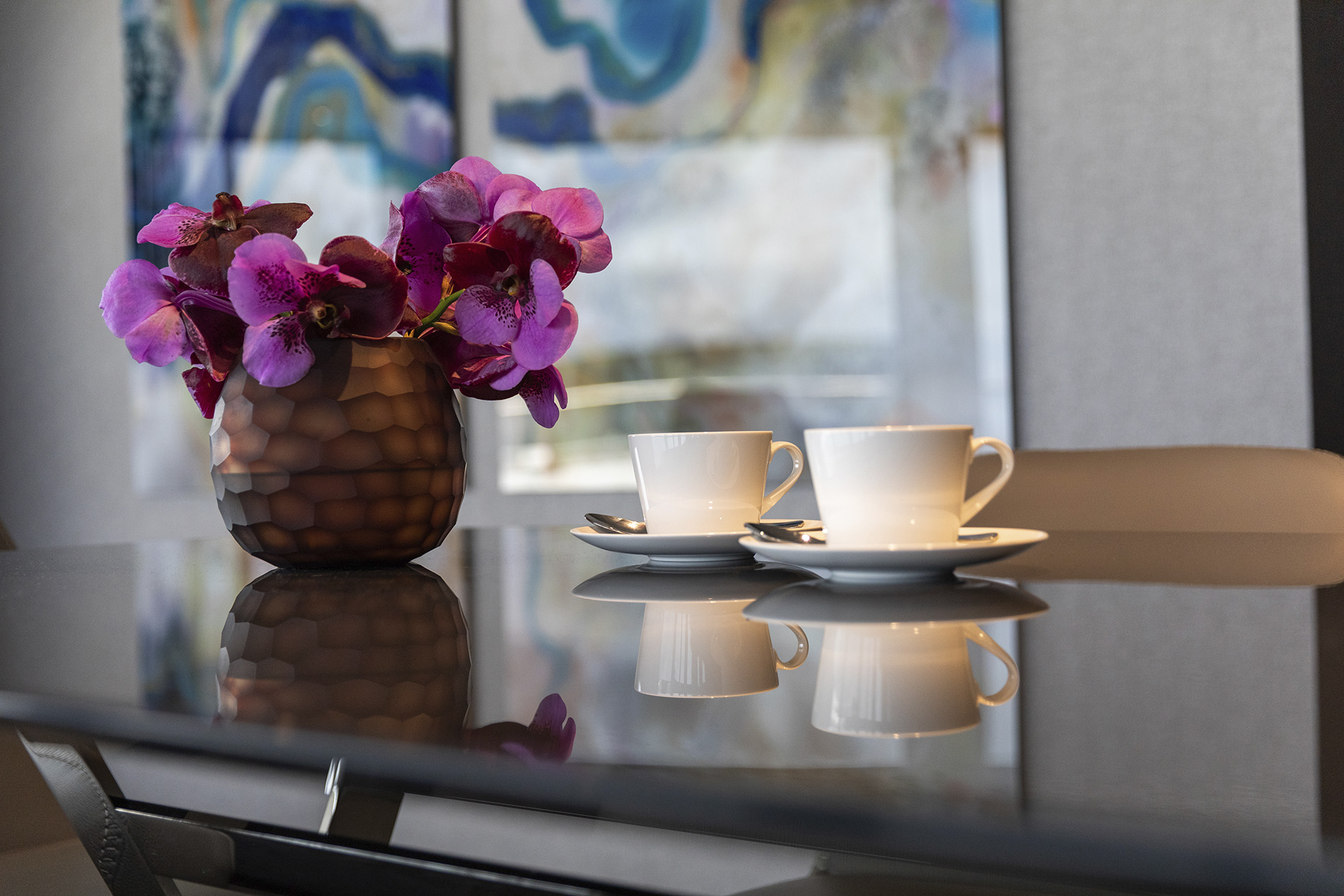
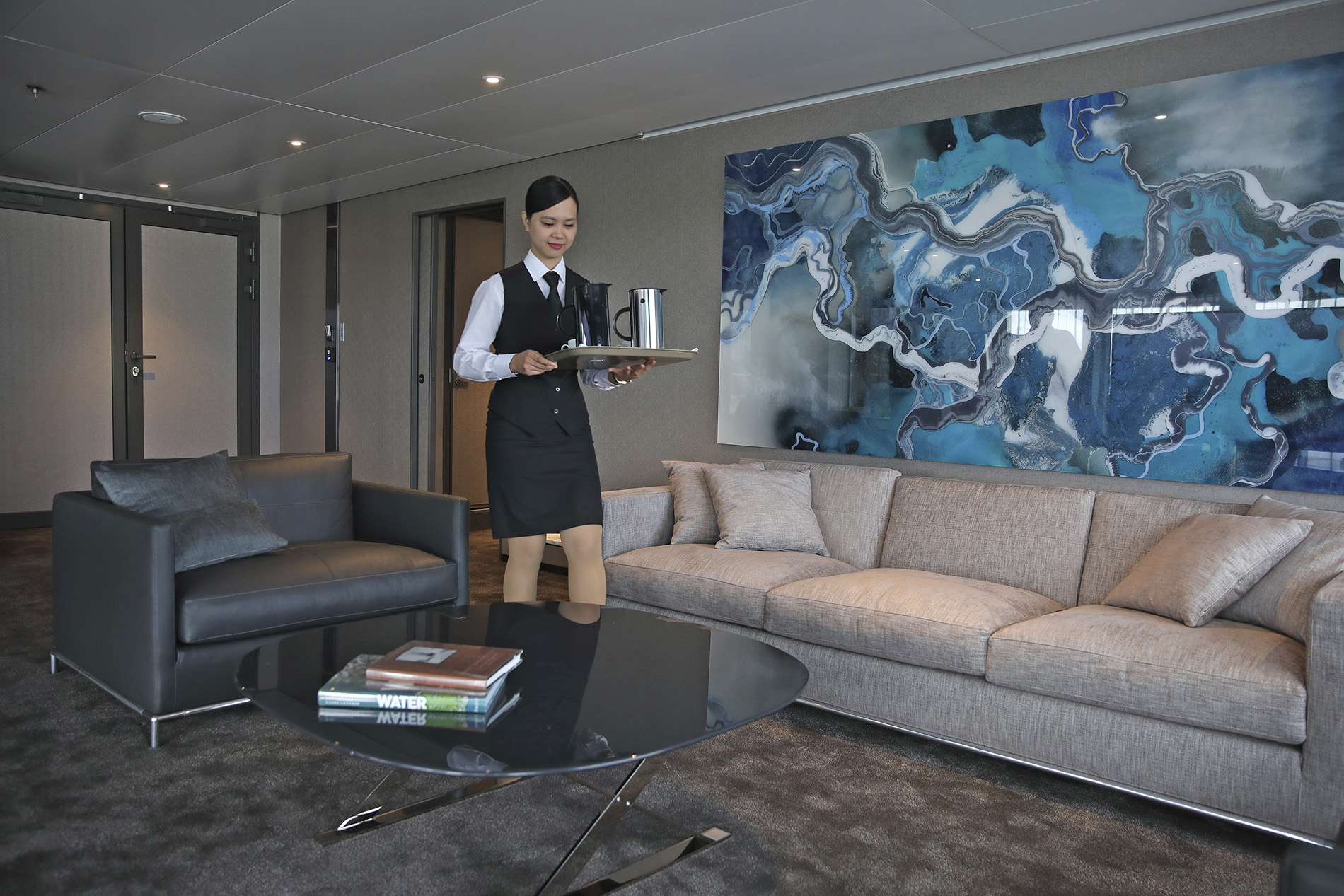
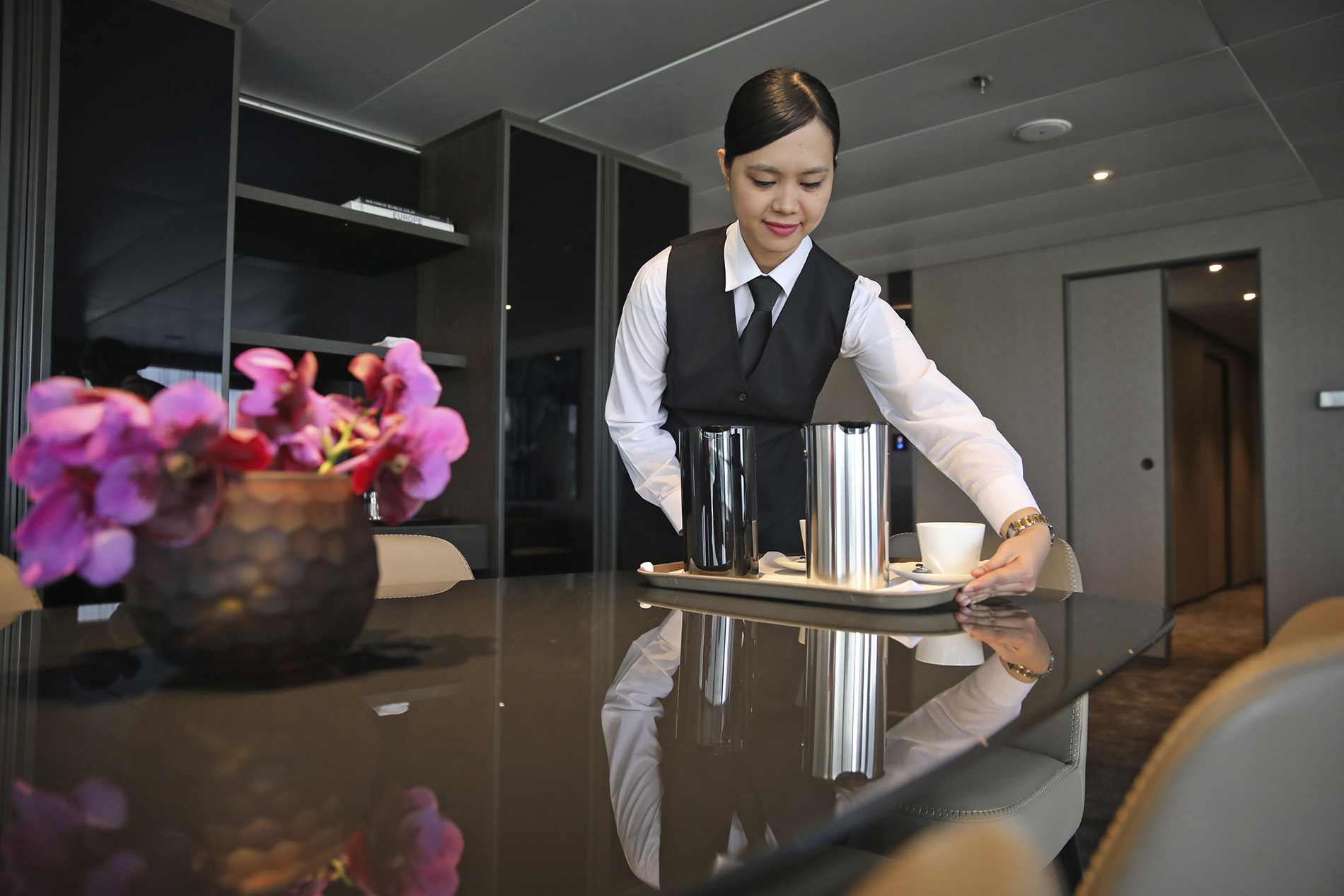
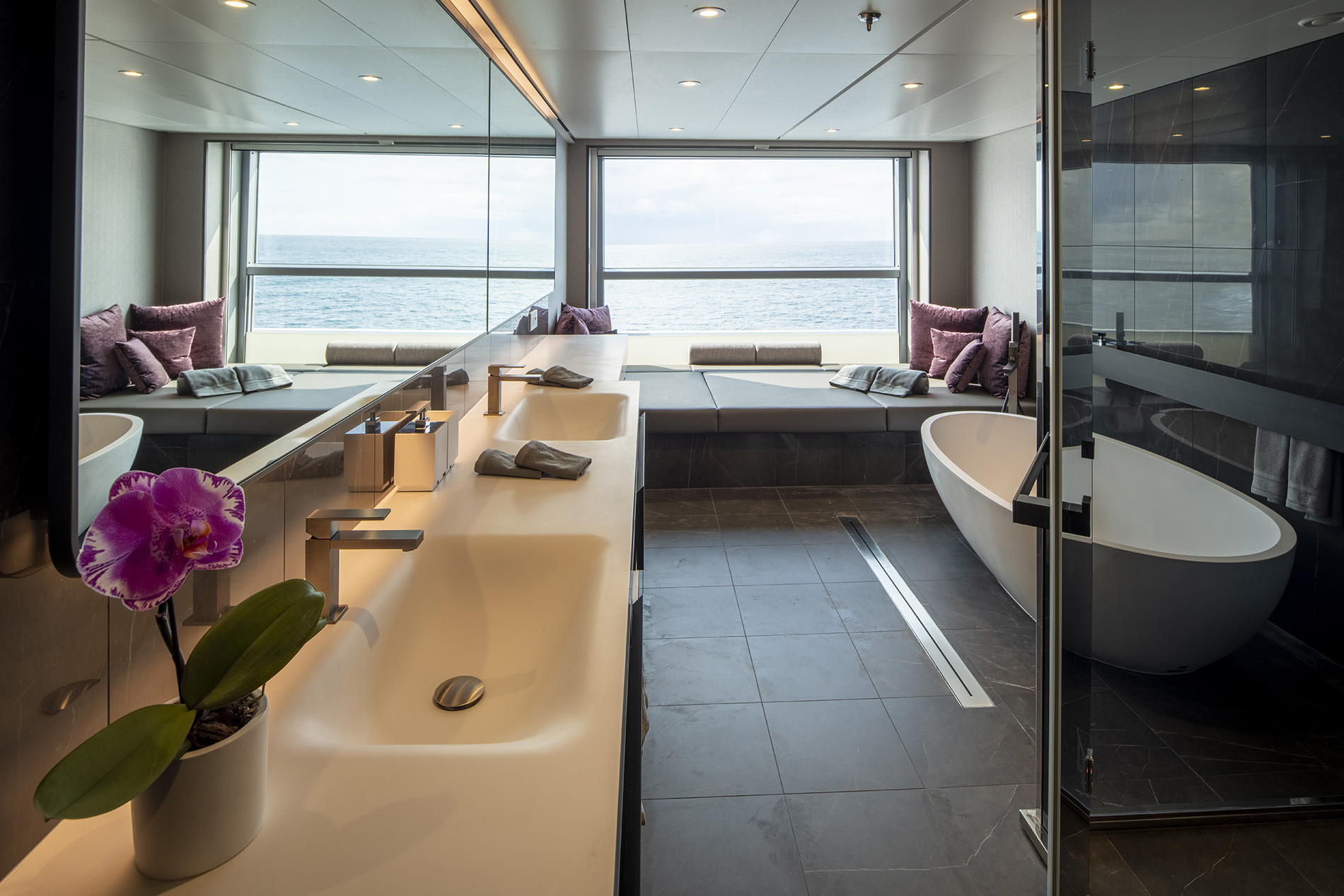
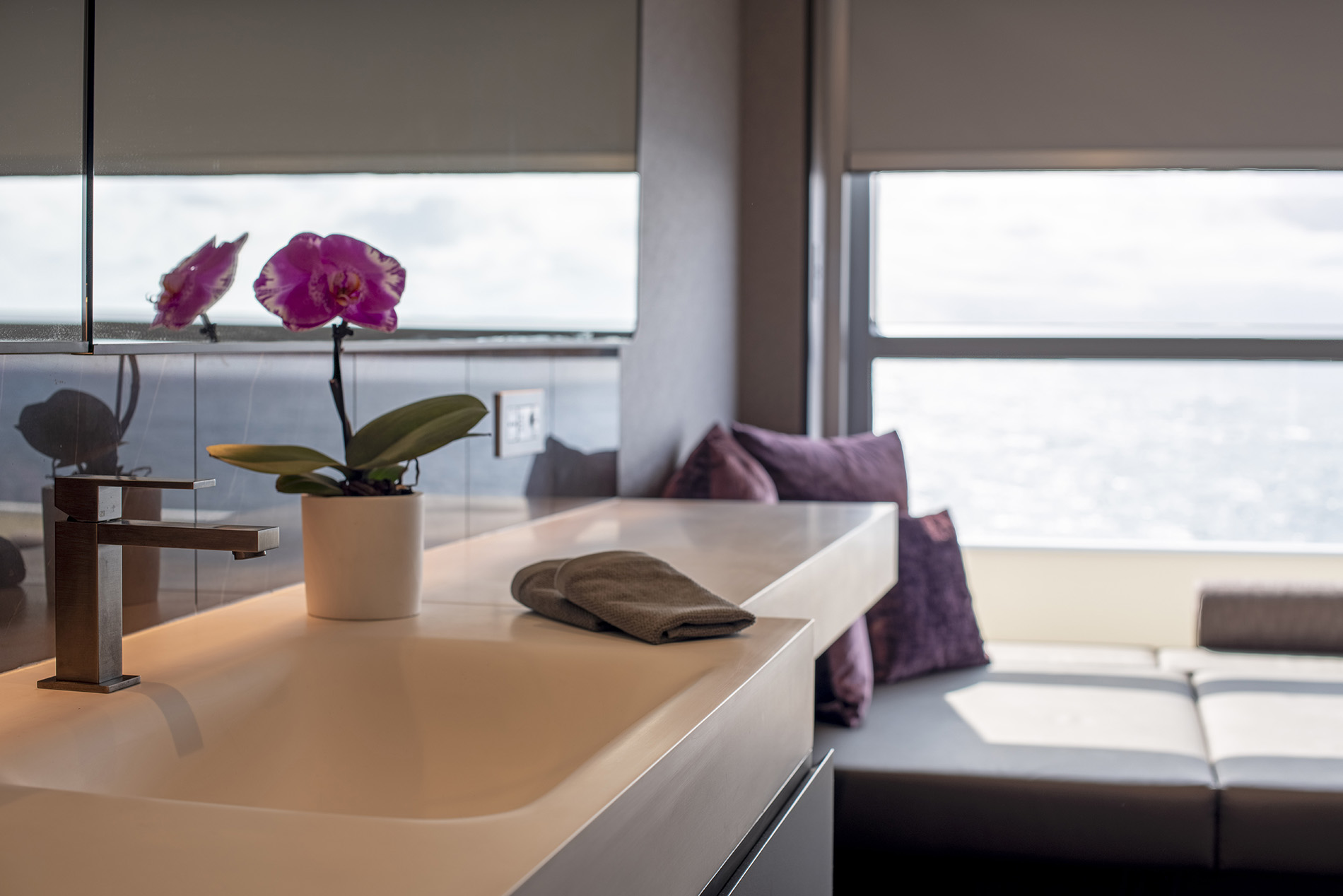
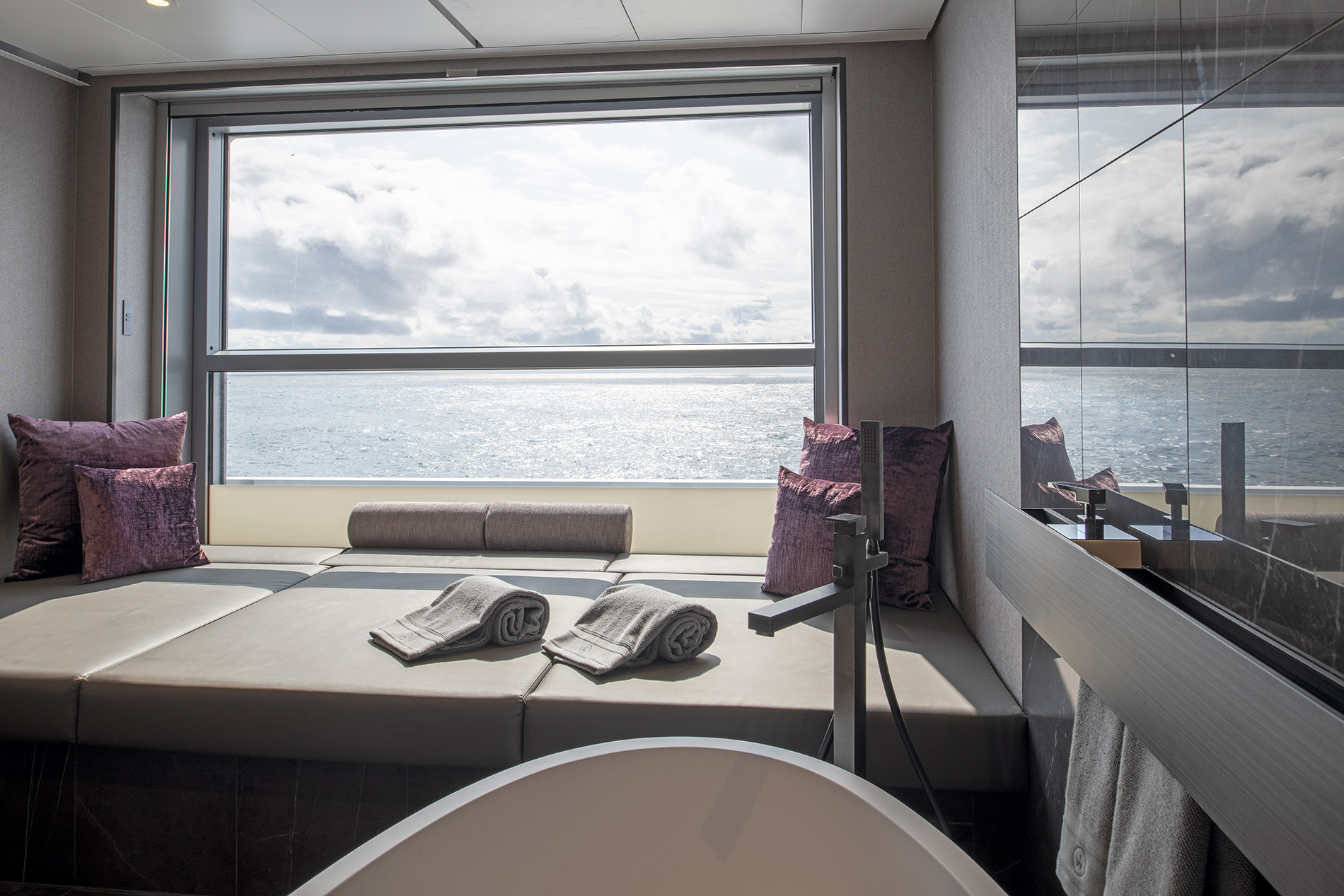
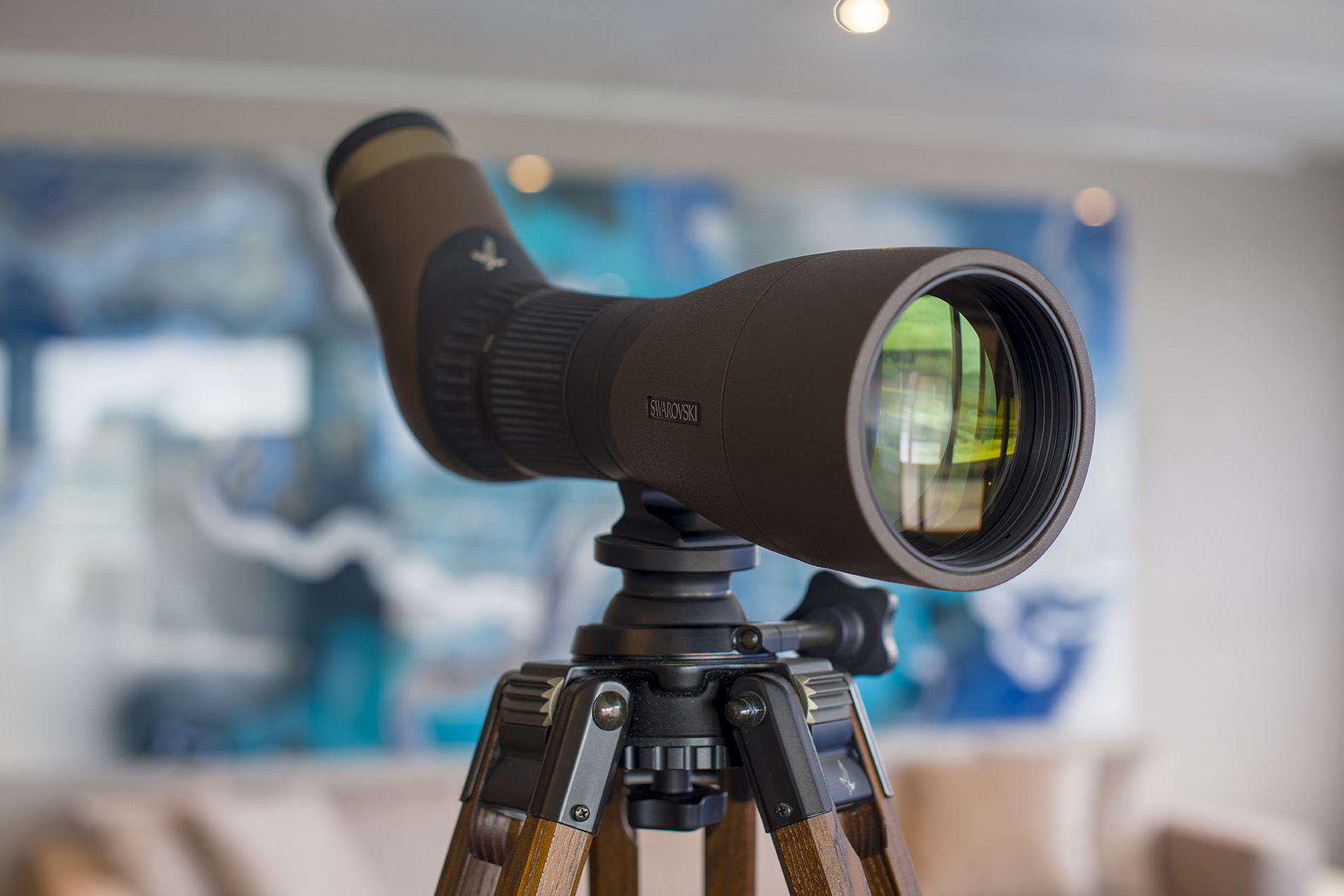
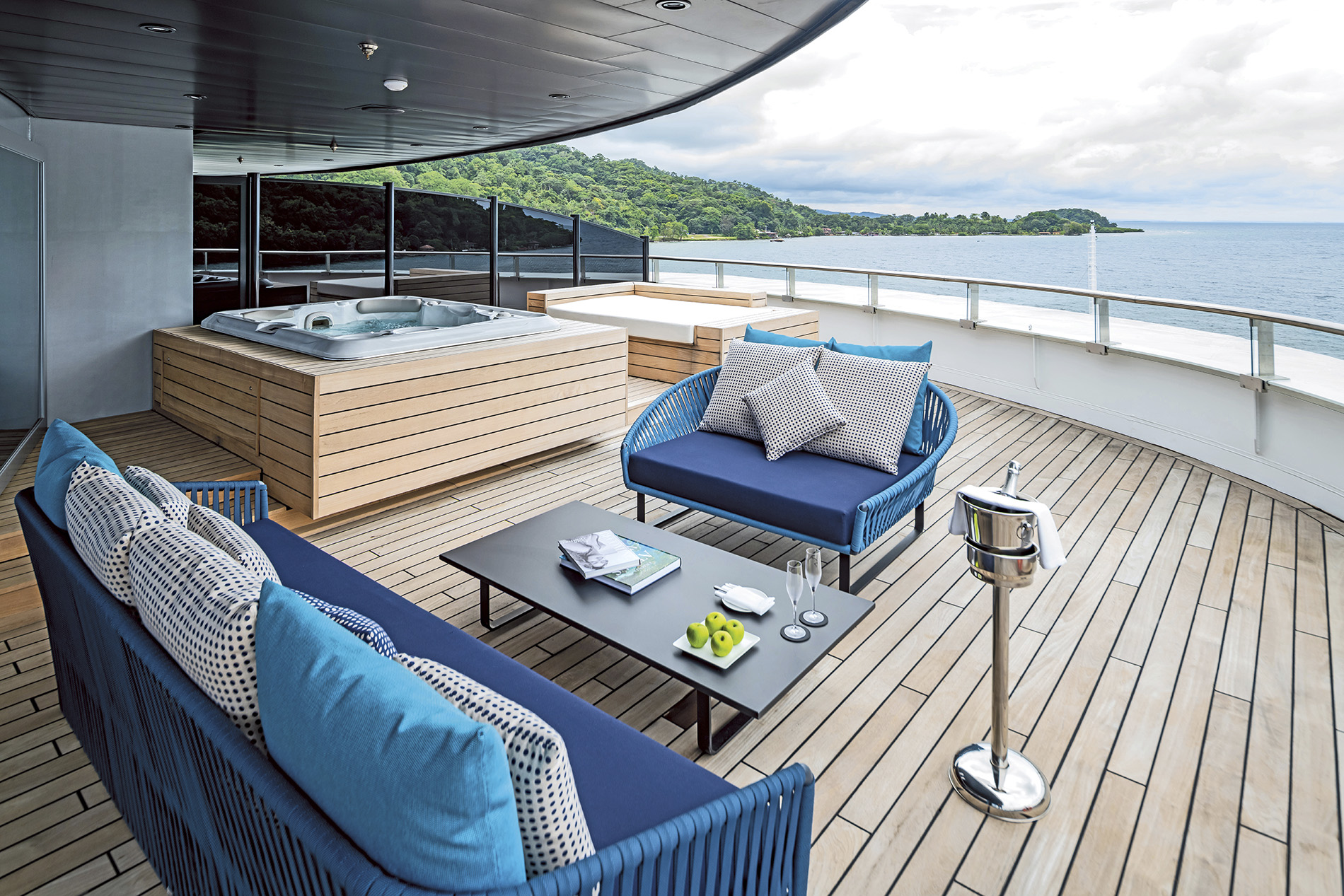
Marvel at incredible panoramic seascapes from the front of Scenic Eclipse as you relax on your spacious terrace in our luxurious Panorama Suites.
Located on Deck 6 and 8 at the front of the Discovery Yacht and overlooking the bow, these remarkable suites feature a spacious curved terrace, perfect for marvelling at incredible wildlife and landscapes.
Suite Features
Ranging in size from 105-110m², grandeur and style are taken to a whole new level in our Panorama and Grand Panorama Suites.
Suite names and amenities are the same across both Scenic Eclipse and Scenic Eclipse II, however, both have been thoughtfully curated to suit the cruising experience of these ships.
Separate Lounge & Bedroom
These grand suites include a host of special features and services. Curl up in your lounge with a kindle e-book from your in-suite library and sip your favourite aperitif, personally delivered by your butler. All before enjoying an intimate dining experience, in the plush and private surroundings of your suite. Even from the comfort of your bedroom, you’ll never miss a photo opportunity – accessing the outside world through your drop-down balcony window, with the gentle touch of a button, and with your in-suite binoculars.
Spacious Terrace
Your curved terrace is the perfect place to relax on a sun lounger and be the first to spot wildlife and incredible landscapes.
Luxurious Bathroom
The luxurious Panorama Suite bathrooms feature a vitality mist shower with colour light therapy, full bath, dual vanity, VIP amenities and Dyson hairdryer.
Priority Reservations & Embarkation
Guests in our Panorama Suites will enjoy the privilege of priority dining in the specialty restaurants as well as priority choice of Scenic Freechoice, Scenic Discovery, helicopter^ and submersible^ excursions. VIP embarkation and disembarkation are standard inclusions at the start and finish of your cruise.
Amenities & Features
- Spacious terrace with sun loungers and in-suite binoculars for optimal viewing
- Bedroom suite with luxury king size Scenic Slumber Bed, reading alcove, walk-in robe, desk, ambient lighting options and HDTV
- Spacious bathroom with vitality mist shower with colour light therapy, full bath, dual vanity, VIP amenities and Dyson hairdryer
- Personalised butler service, in-suite beverage and dining service
- Separate lounge and dining area with a four-seat dining table, cinema surround HDTV with Bose® speakers
- A full complementary mini-bar stocked with wines, Champagne and spirits personalised to your preference, including illy coffee and specialty teas re-stocked daily
- Complimentary laundry service~
- Priority dining in specialty restaurants and guaranteed dining reservations
- Priority choice of shore excursions
- VIP embarkation and disembarkation
- Advanced Heating, Ventilation and Air-Conditioning system (HVAC) provides 100% fresh air
- The highest sound insulation as per the marine class society Bureau Veritas
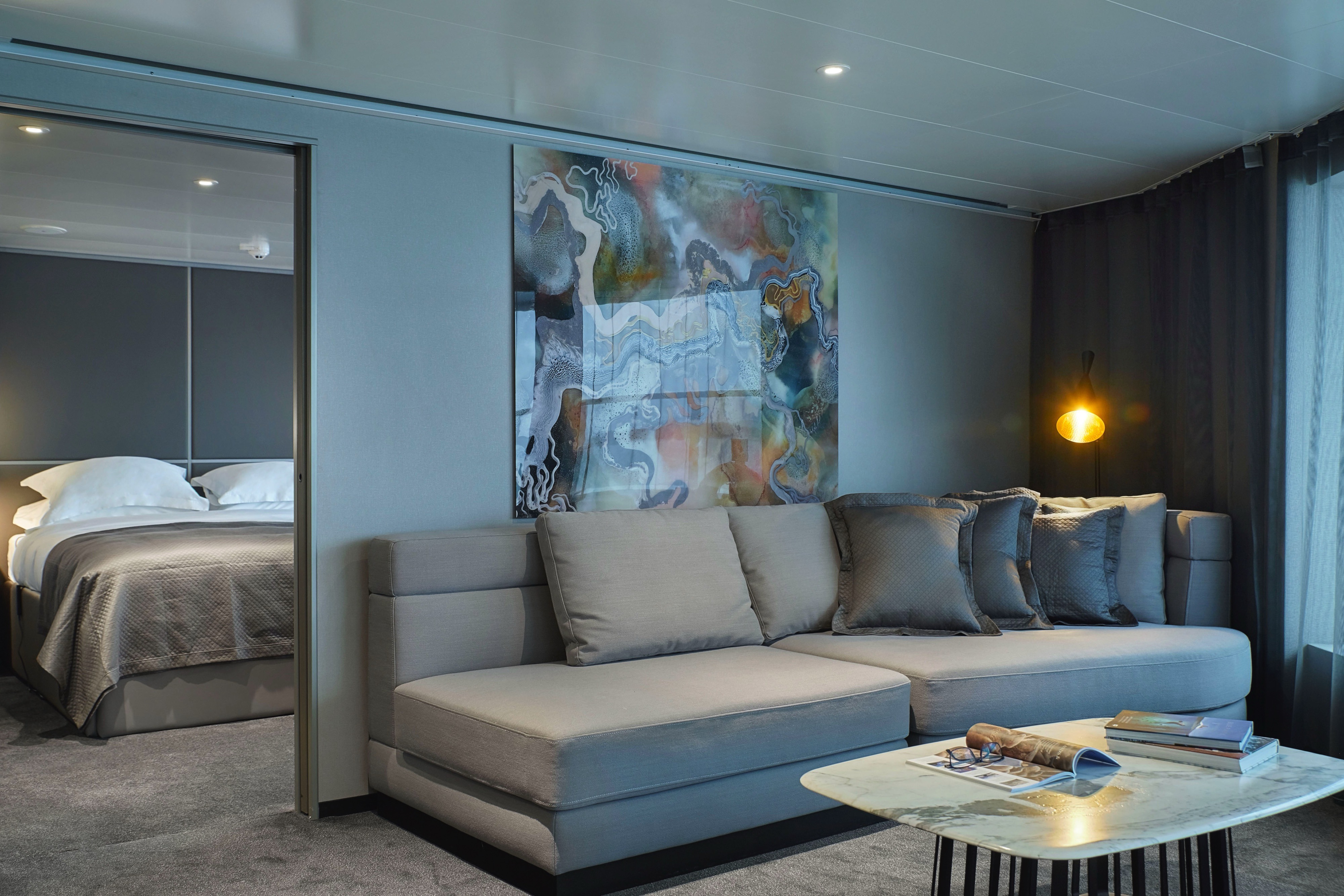
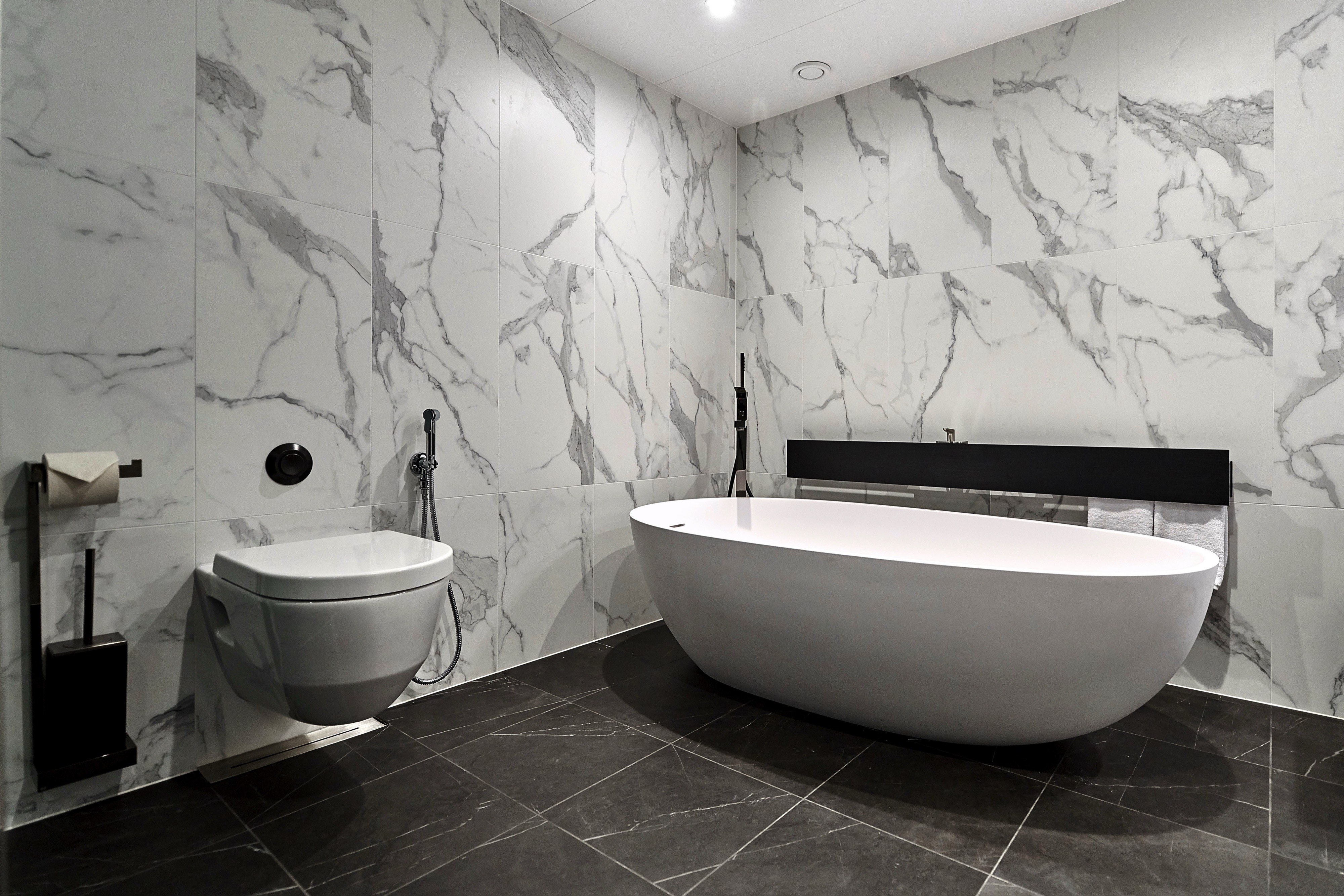
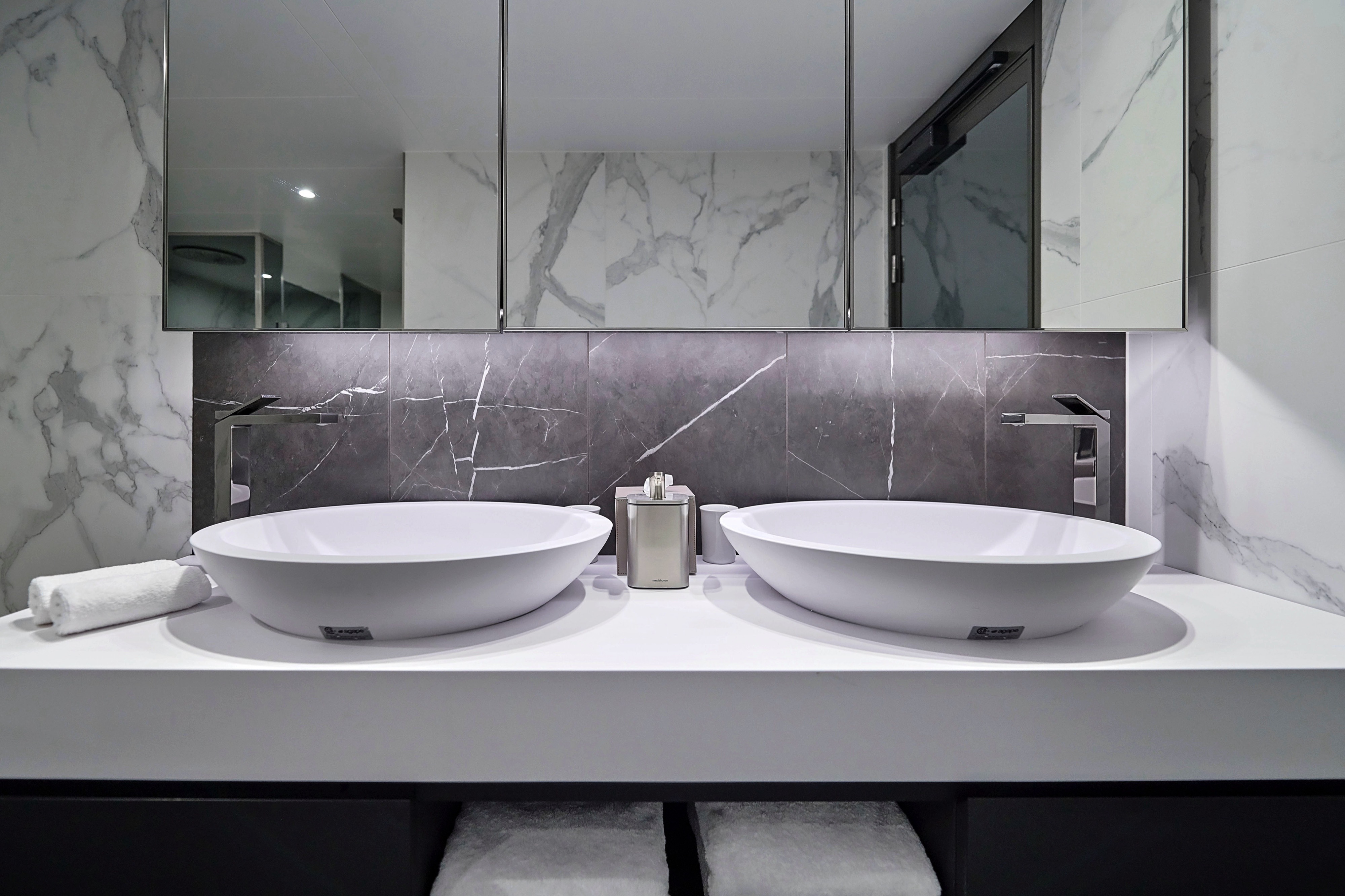
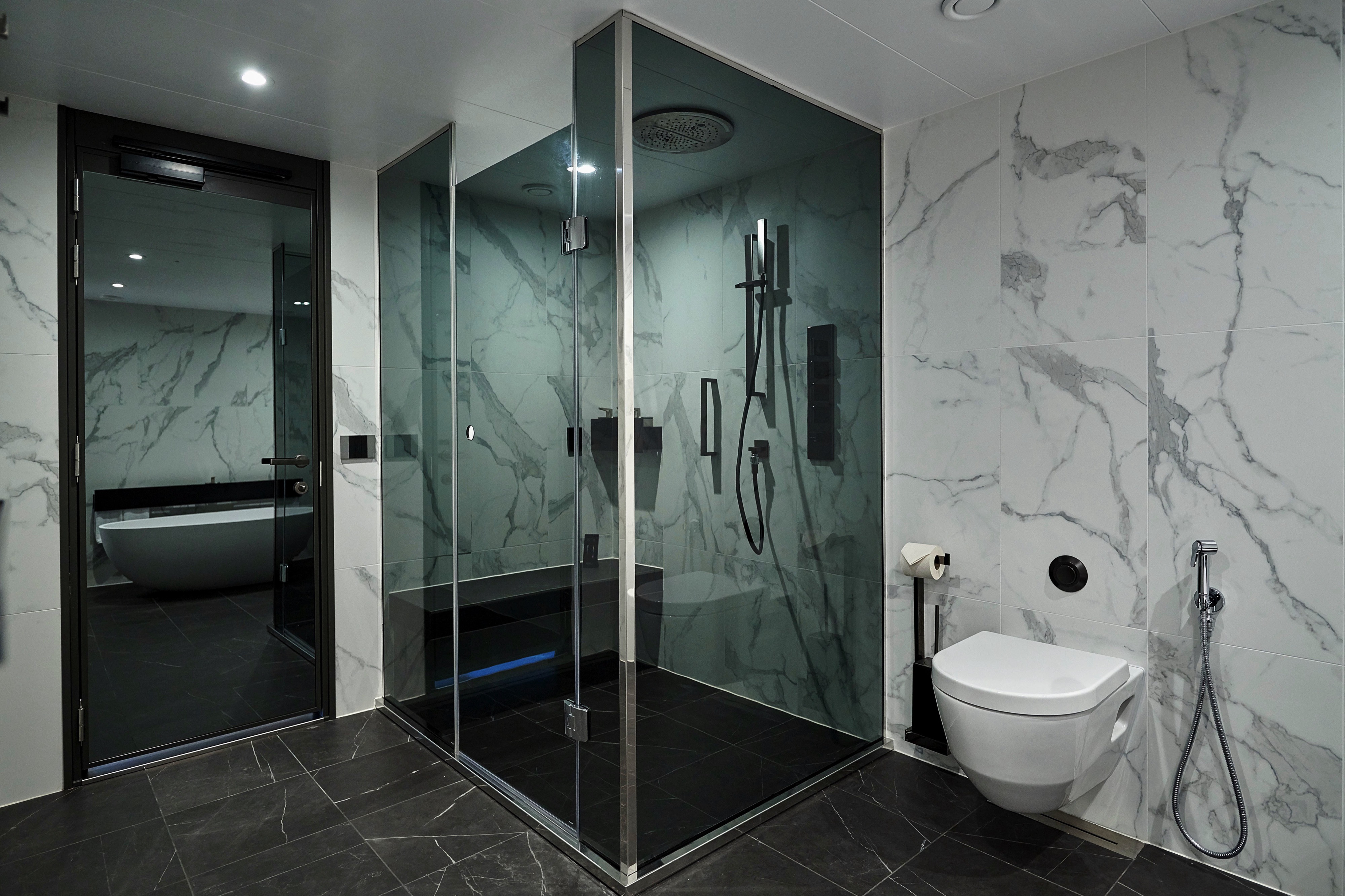
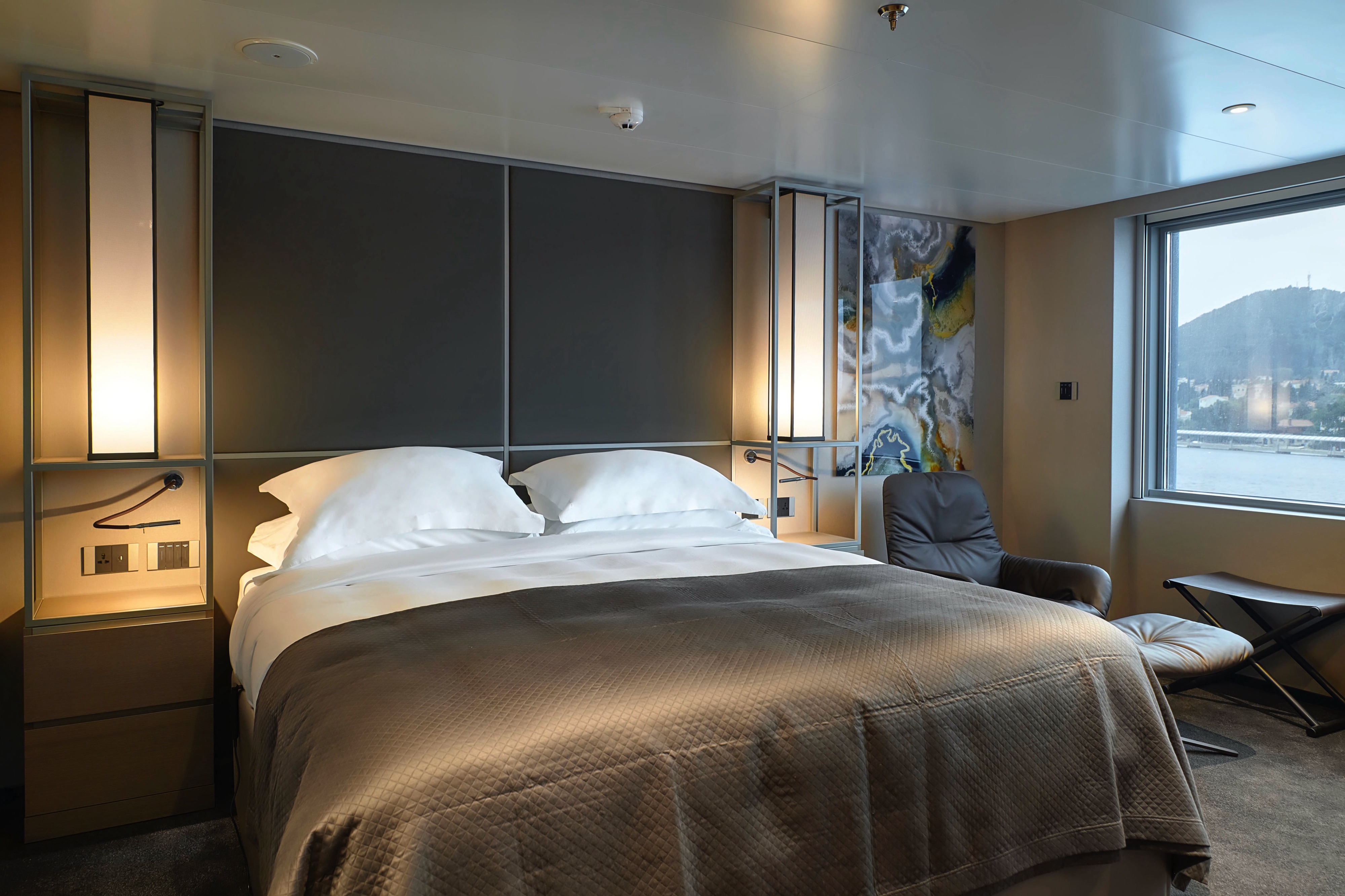
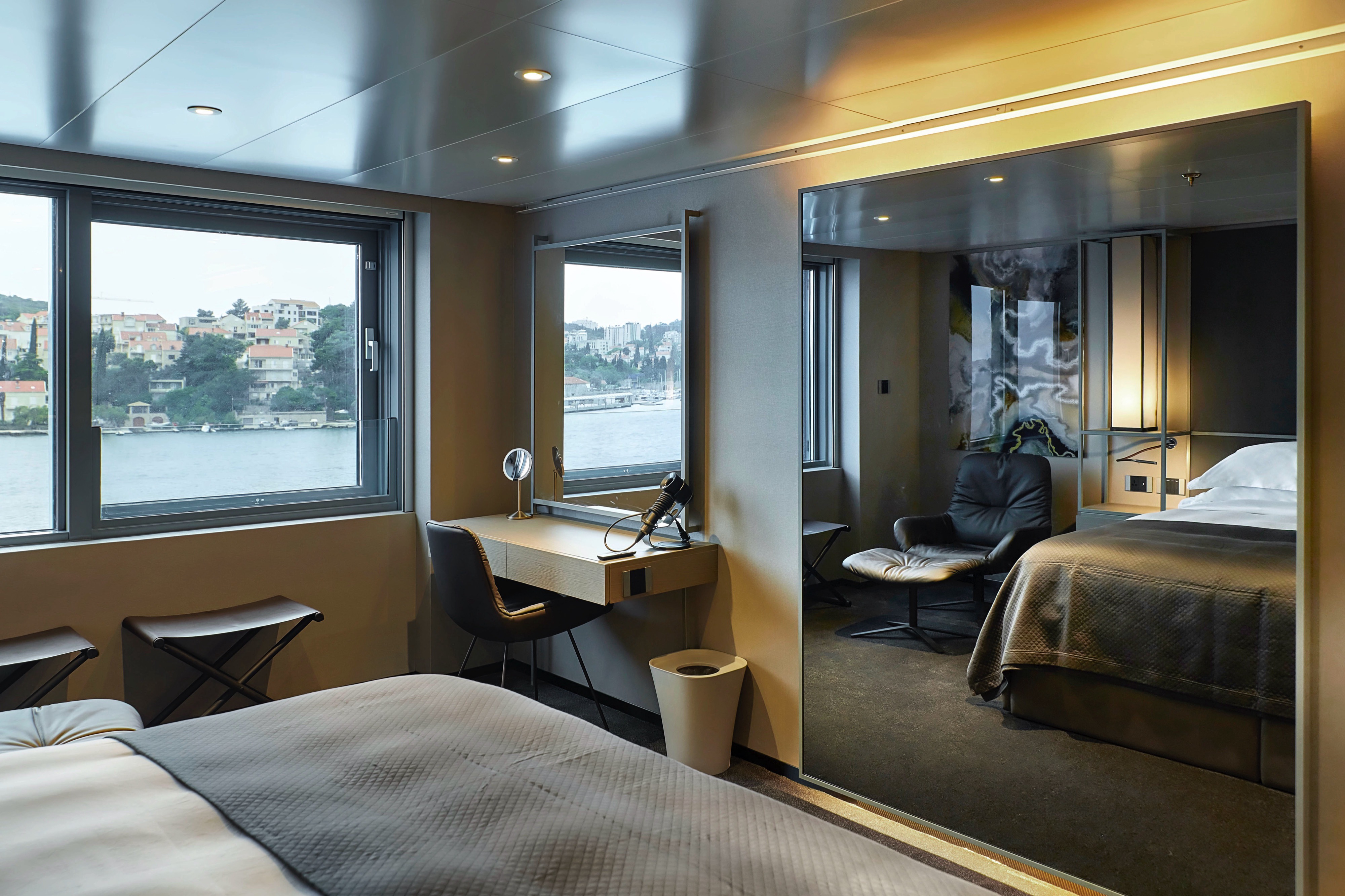
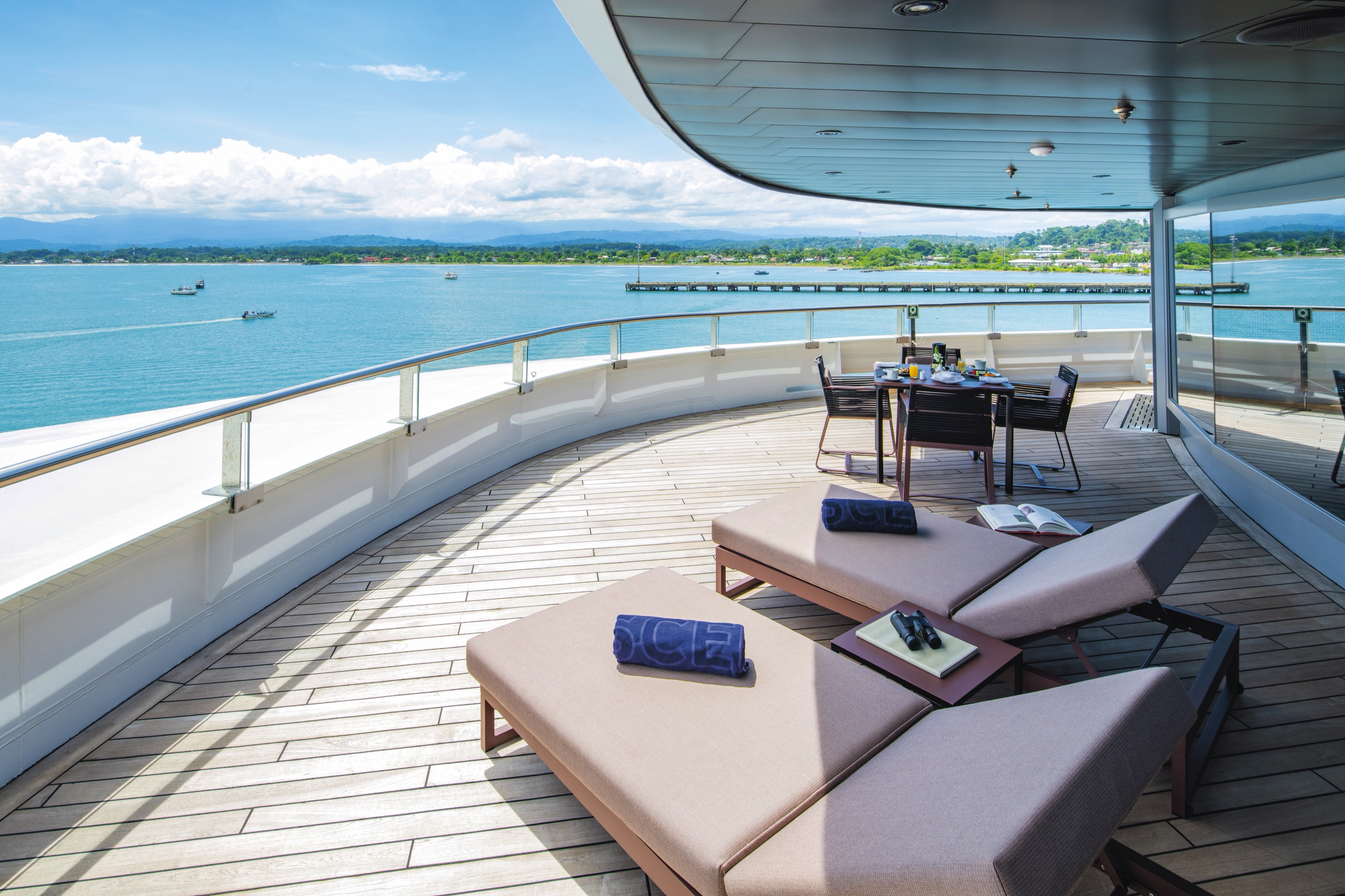
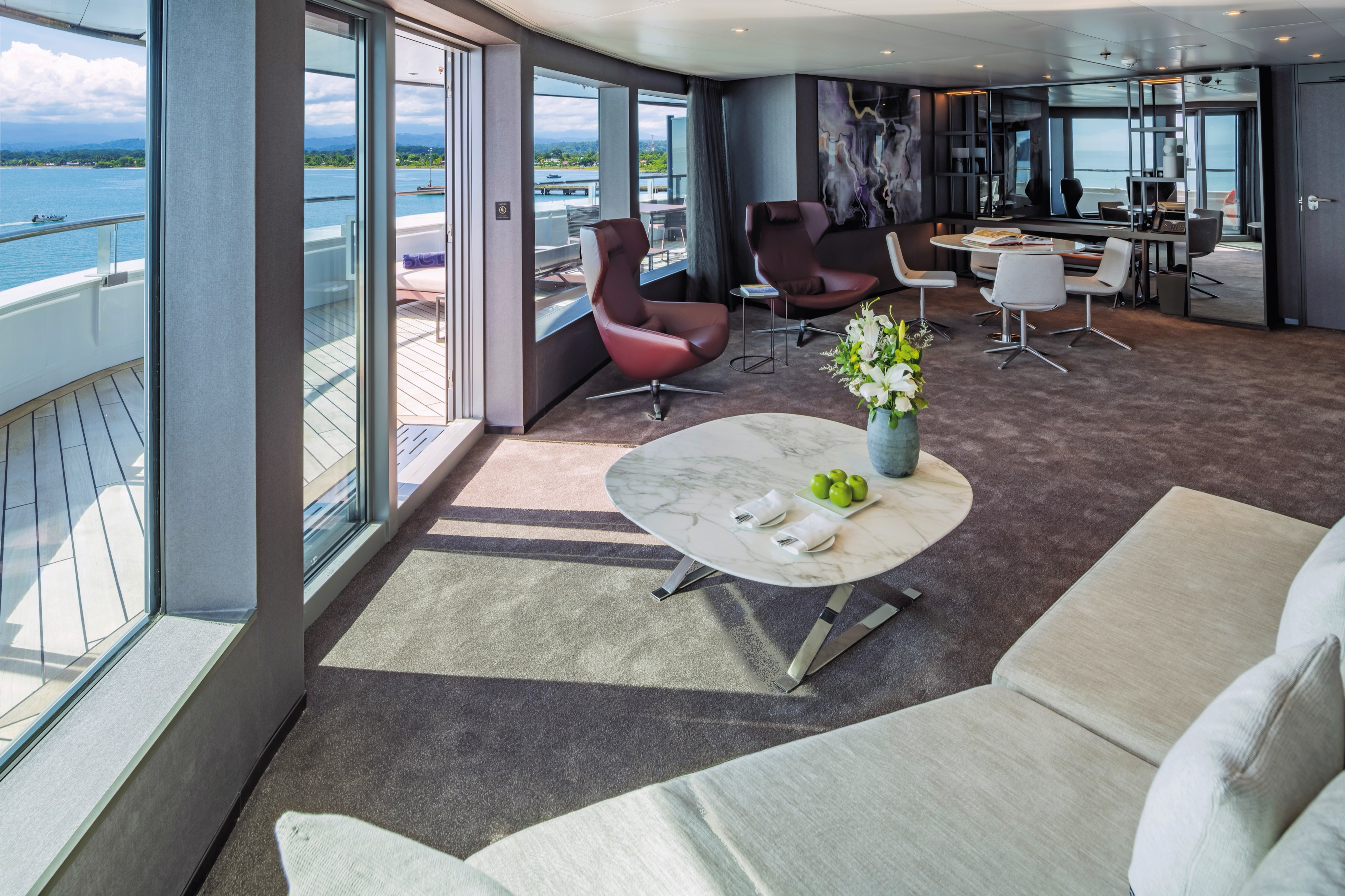
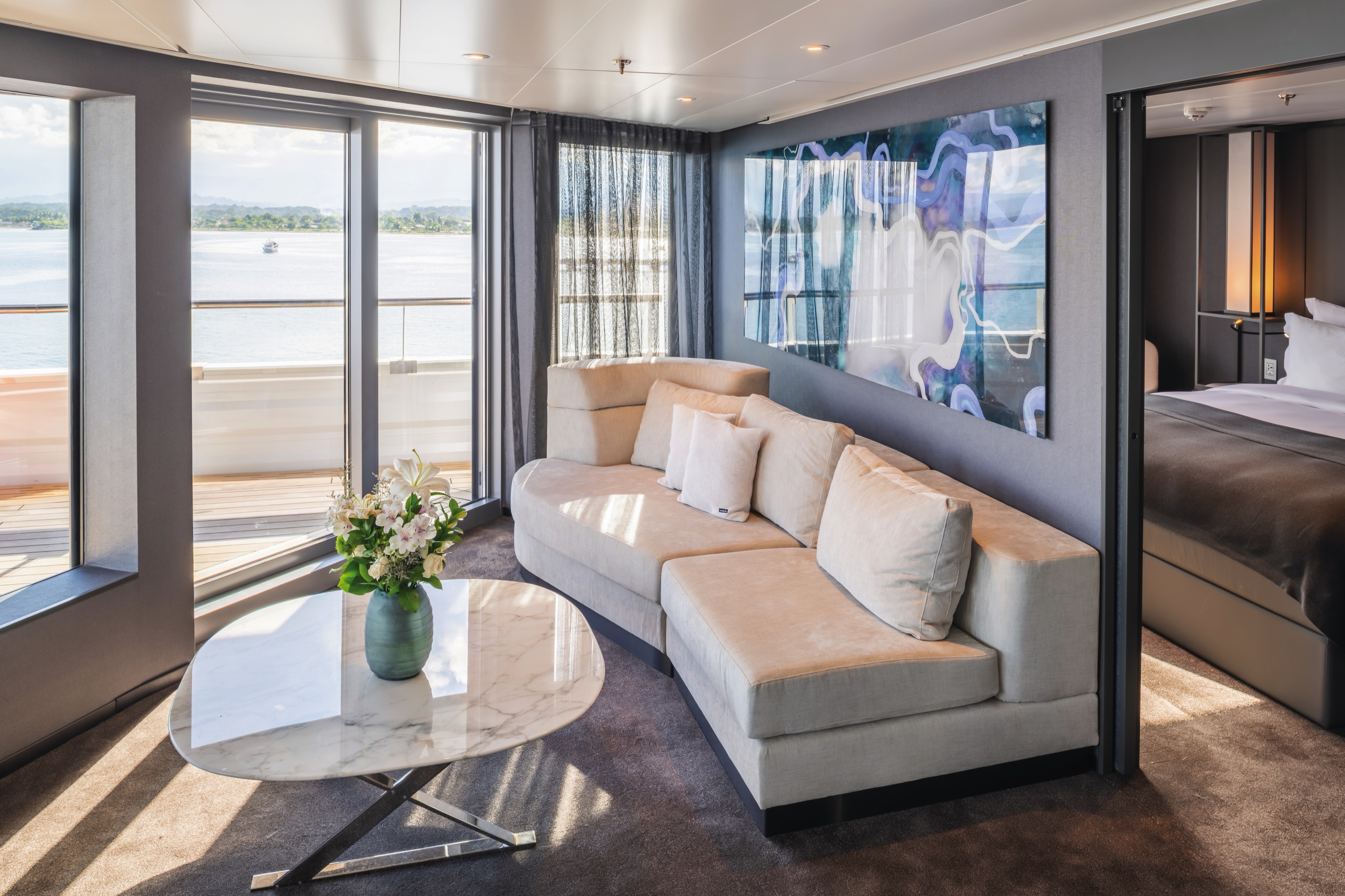
Imagine returning from an exhilarating day of all-inclusive excursions to your private hideaway and relaxing in your luxurious spa bath. Our indulgent Spa Suites will provide the ultimate rejuvenation.
Suite Features
Ranging in size from 46-50m², our Spa Suites are located on Deck 8 and 9.
Suite names and amenities are the same across both Scenic Eclipse and Scenic Eclipse II, however, both have been thoughtfully curated to suit the cruising experience of these ships.
Lounge and Sleeping Area
With a premier location on the higher Decks 8 and 9 and an impressive 46-50m2 in size, our opulent Spa Suites provide the most inviting of ultra-luxury retreats. Featuring a separate sleep zone with a four-poster king-size Scenic Slumber Bed, a lounge area as well as a private verandah, they are the perfect retreat after a day of discovery.
Luxurious Spa
Step into the private sanctuary of your Spa Suite and soak in a steaming bath drawn by your butler. Gaze out over your verandah to the vistas beyond and sip on a glass of Champagne – heaven.
Scenic Eclipse I features the signature double-sized Philippe Starck-designed spa bath, while Scenic Eclipse II offers a luxurious circular spa bath overlooking your verandah. Exclusive to these suites, the baths provide the perfect way to rejuvenate after your day of activities.
There are variations between the Spa Suite configurations on Scenic Eclipse I and II, and these distinctions are subject to the respective ship's specifications and design.
Private Verandah
Your private verandah is the perfect place to unwind. Be immersed in the tranquillity of the sea or be the first to catch sight of wildlife and breathtaking landscapes.
Amenities & Features
- Luxury king-size Scenic Slumber Bed, separate sleeping zone and lounge area with reading chair
- An expansive bathroom with a rectangular spa bath on Scenic Eclipse I and circular spa bath on Scenic Eclipse II
- A steam shower, with oversized head and soothing light therapy
- Dual vanity basins, luxurious amenities and Dyson hairdryer
- Walk-in robe
- A full complimentary mini-bar stocked with wines, Champagnes and spirits personalised to your preference, including illy coffee and specialty teas re-stoked daily.
- Personalised butler service
- Complimentary laundry service~
- Guaranteed dining reservations
- Priority choice of shore excursions
- VIP embarkation and disembarkation
- Advanced Heating, Ventilation and Air-Conditioning system (HVAC) provides 100% fresh air
- The highest sound insulation as per the marine class society Bureau Veritas
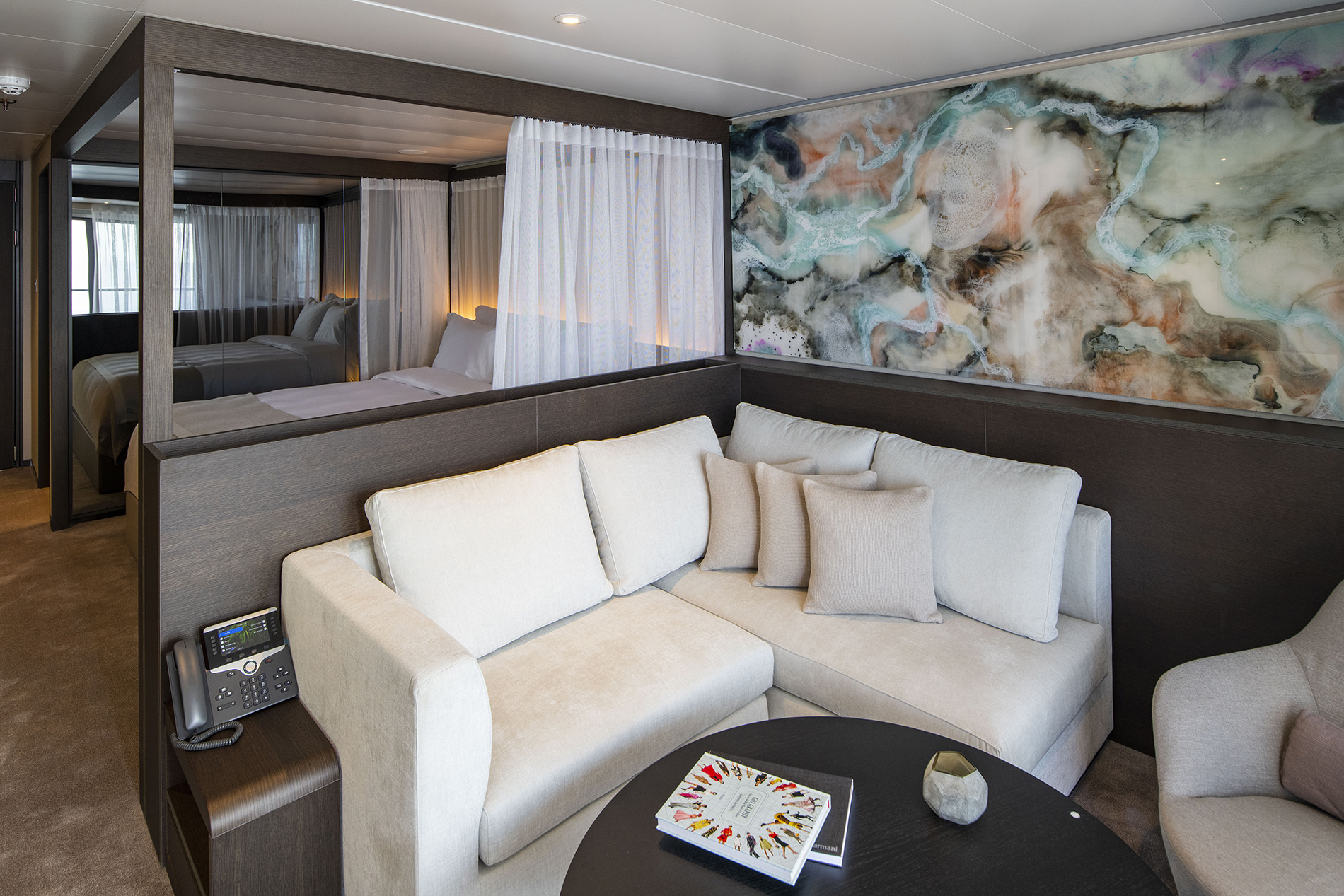
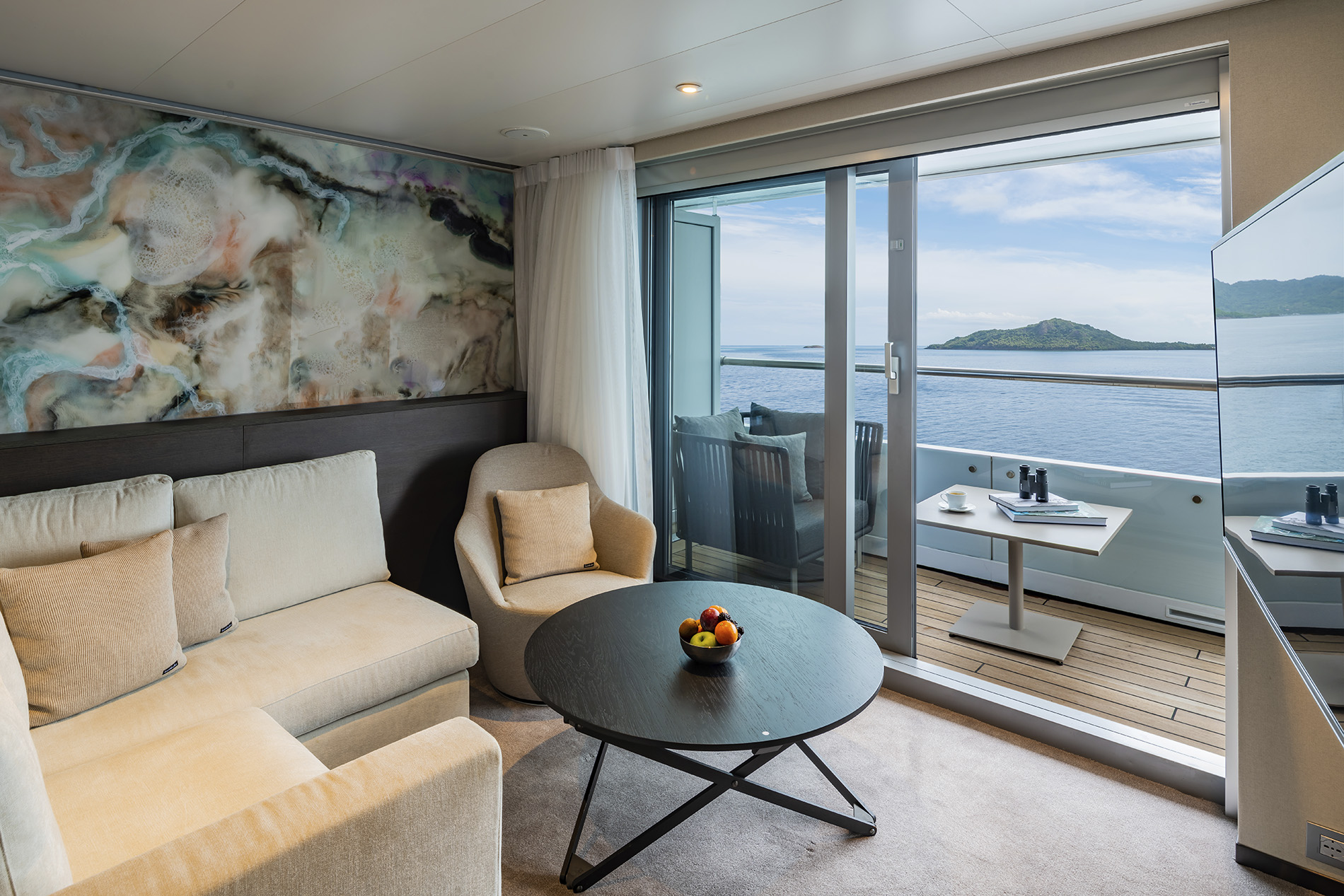
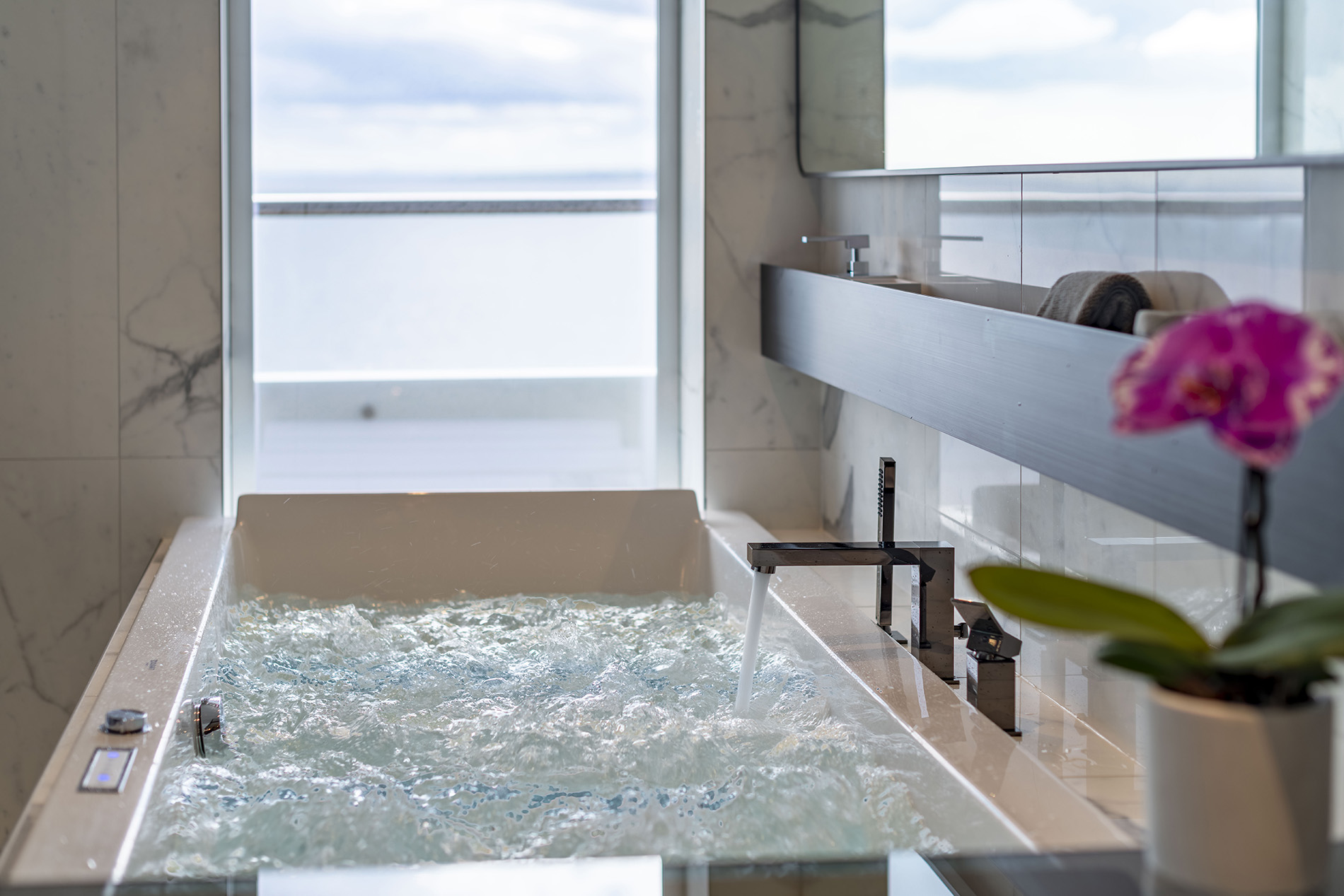
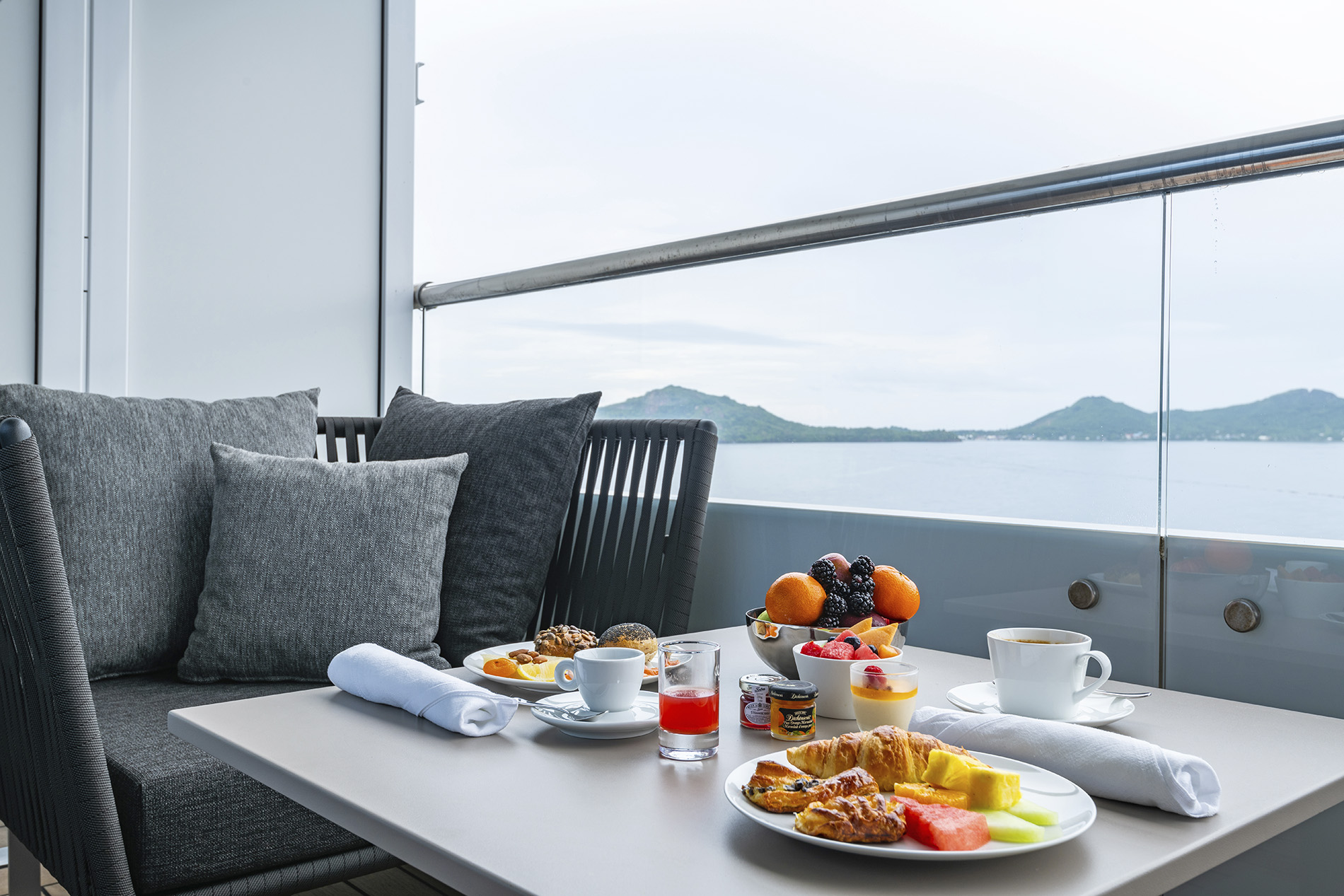
Our generously-sized Grand Deluxe Verandah Suites are your own private hideaway, furnished with the finest ultra-luxury amenities, including a plush king-size bed, pillow menu, walk-in wardrobe and a lounge area to relax in after a day of discovery.
Suite Features
Ranging in size from 32 - 34m², located on Deck 5 to 8, each suite includes:
Lounge & Sleeping Area
Your private hideaway is furnished with the finest ultra-luxury amenities, including plush king-size bed, pillow menu and a lounge area where you can relax after a day of discovery.
Private Verandah
Admire your window to the world. These incredibly spacious and thoughtfully designed suites feature floor-to-ceiling sliding glass doors that open onto sprawling vistas, spectacular seascapes and marvellous marine life. Your private verandah or terrace is the perfect place to unwind as a new world of wonder moves by.
Amenities & Features
- A private verandah with in-suite binoculars for optimal viewing
- Luxury king-size Scenic Slumber Bed
- Separate sleeping zone and lounge area
- En-suite bathroom with shower and vanity
- Luxury bathroom amenities and Dyson hairdryer
- Ambient lighting options
- Personalised butler service
- A full complimentary mini-bar stocked with wines, Champagne and spirits personalised to your preference, including illy coffee and specialty teas re-stocked daily
- In-suite beverage and dining service
- HDTV entertainment system and Bose® speakers
- Advanced Heating, Ventilation and Air-Conditioning system (HVAC) provides 100% fresh air
- The highest sound insulation as per the marine class society Bureau Veritas
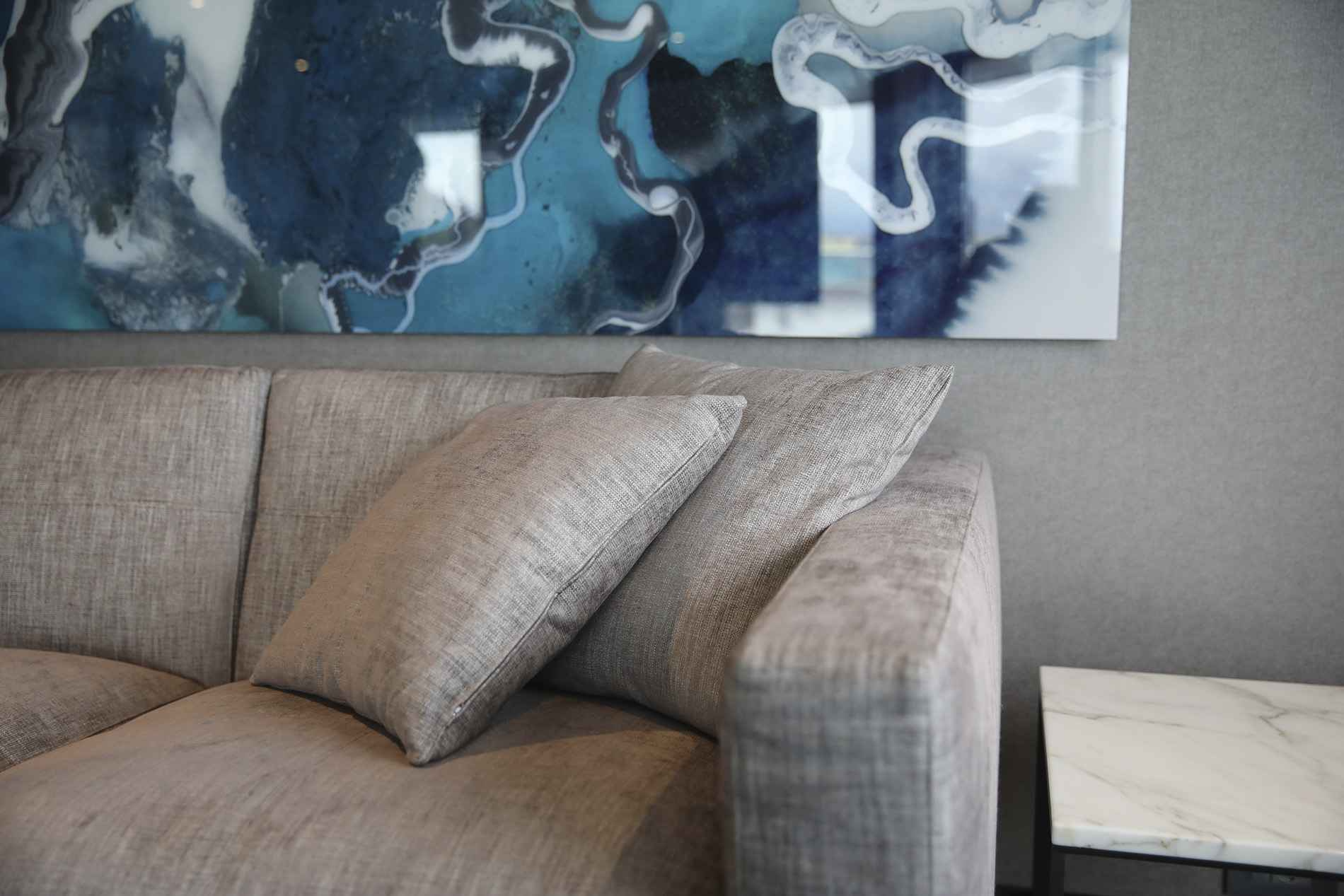
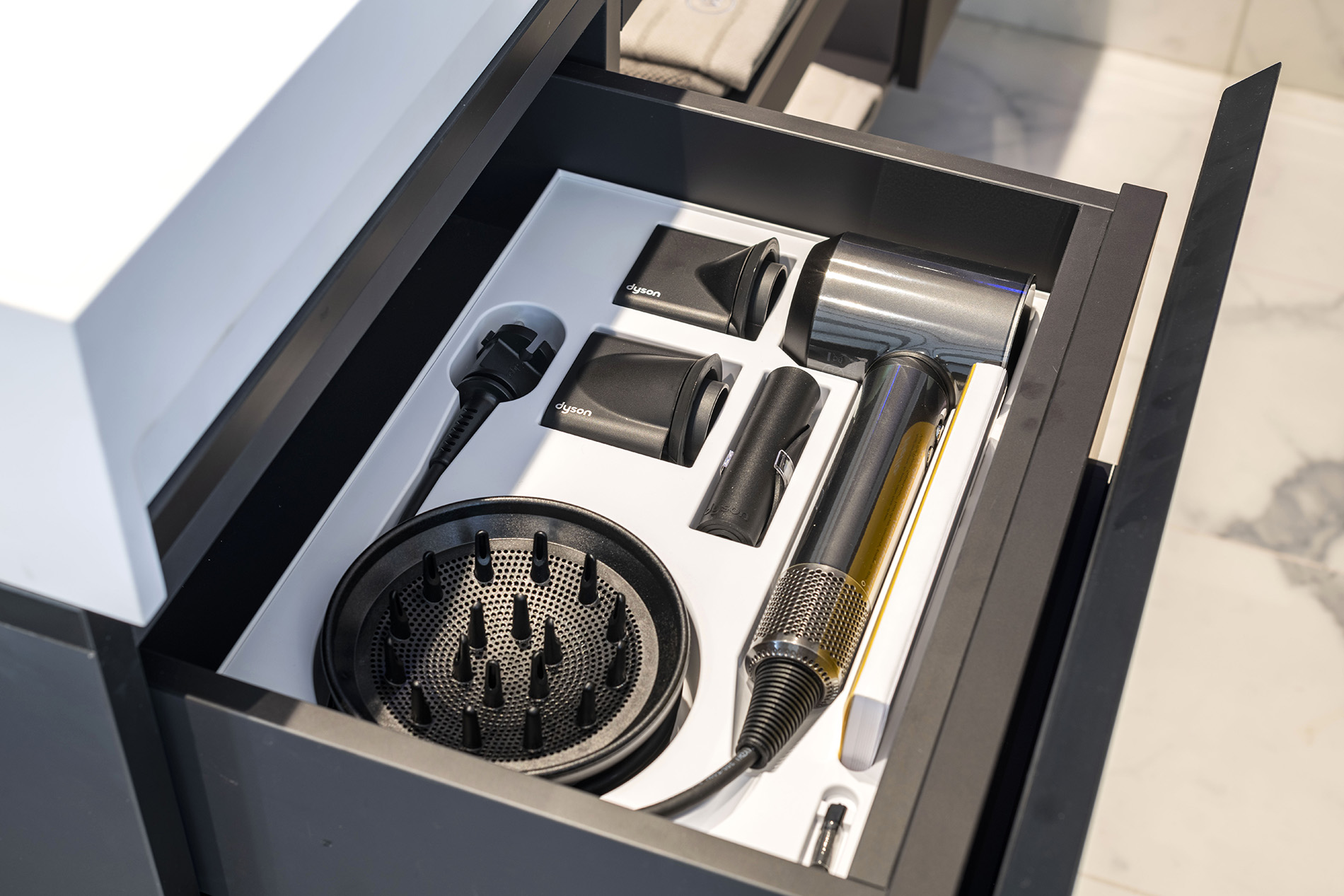

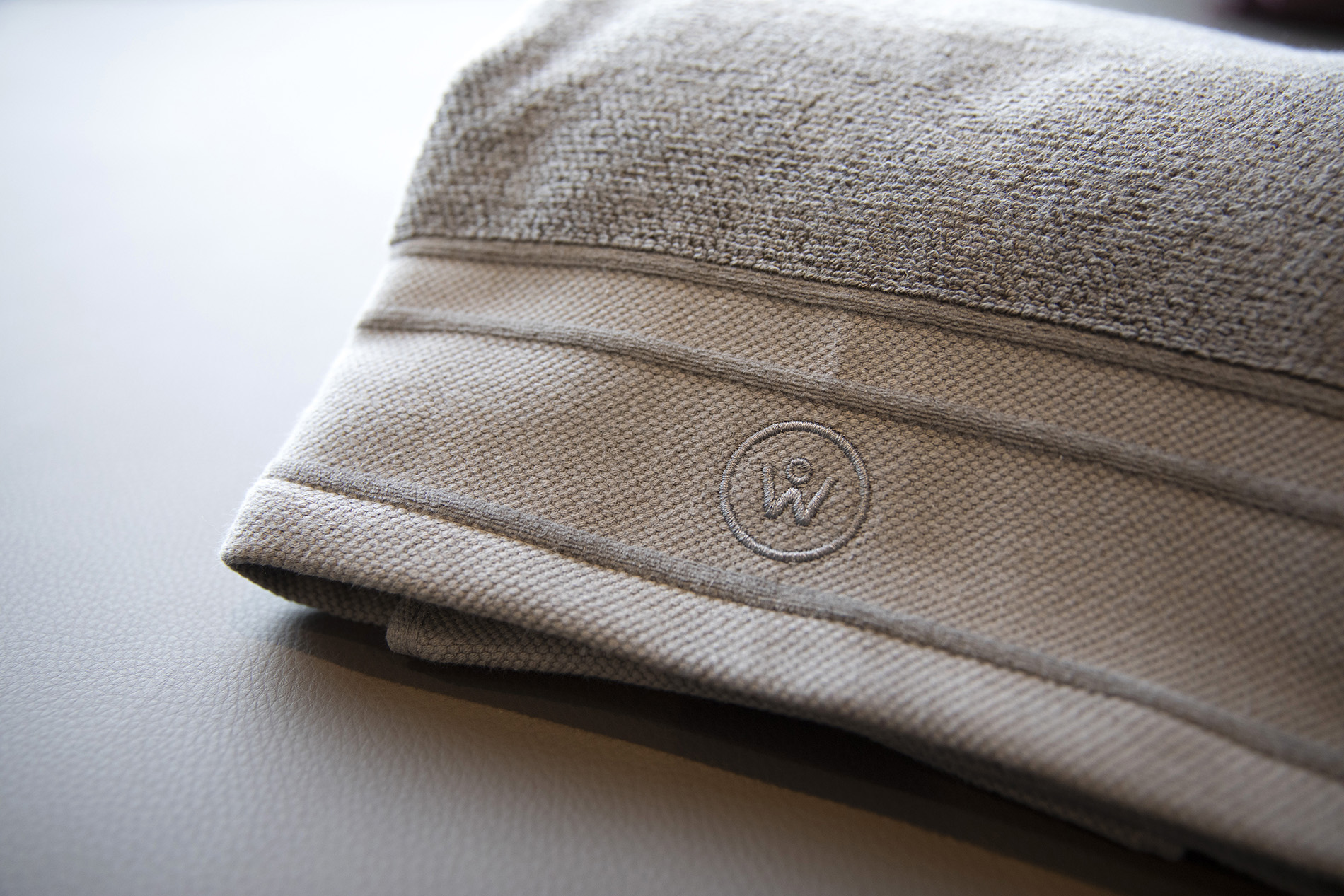
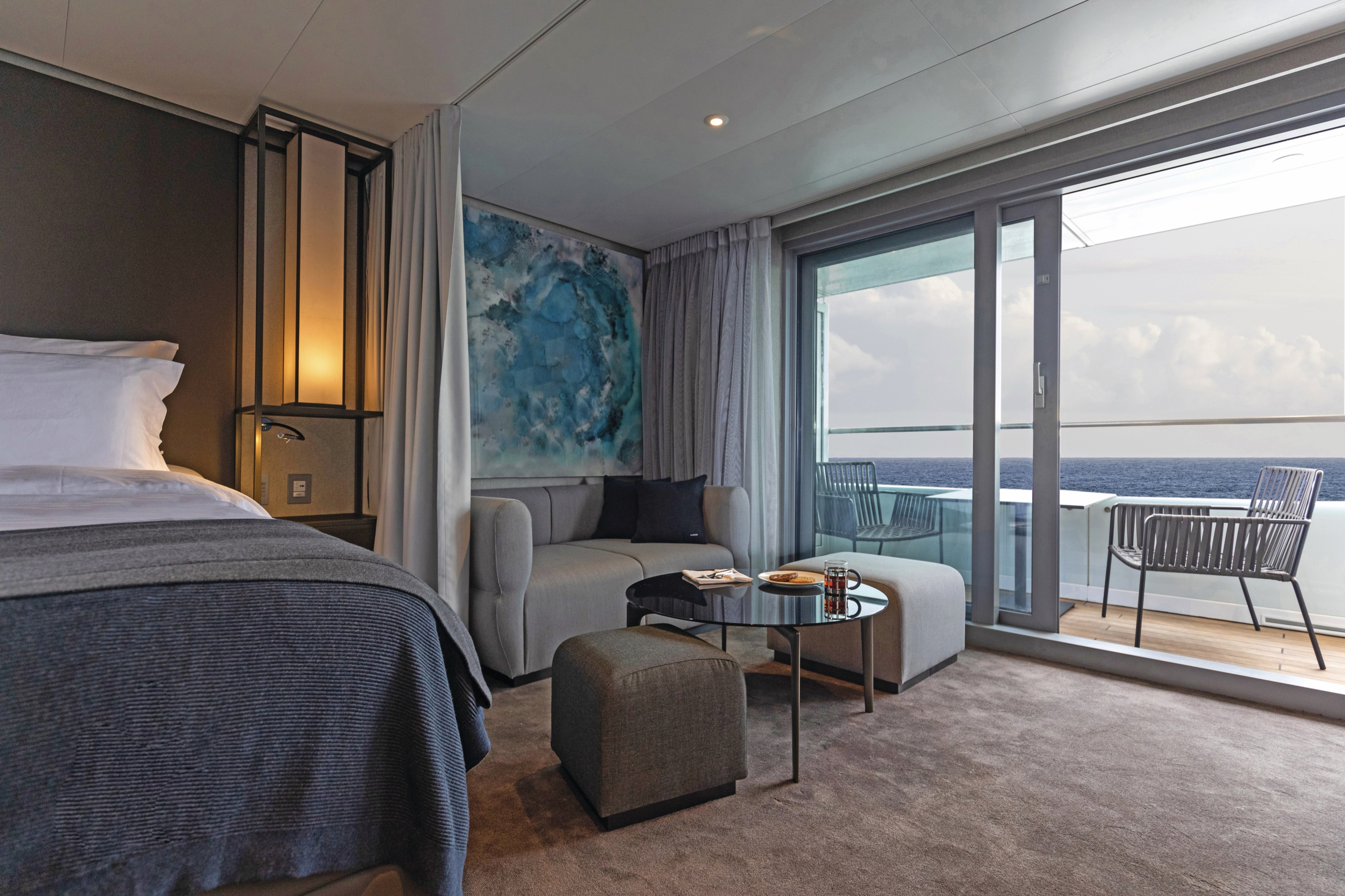
Our spacious Verandah & Deluxe Verandah Suites are thoughtfully designed with floor-to-ceiling sliding glass doors that open onto a private verandah or terrace. Enjoy unwinding in the separate lounge area with your choice of refreshment.
Suite Features
Ranging in size from 32 - 34m², located on Deck 5 to 8, each suite includes:
Lounge & Sleeping Area
Your private hideaway is furnished with the finest ultra-luxury amenities, including plush king-size bed, pillow menu and a lounge area where you can relax after a day of discovery.
Private Verandah
Admire your window to the world. These incredibly spacious and thoughtfully designed suites feature floor-to-ceiling sliding glass doors that open onto sprawling vistas, spectacular seascapes and marvellous marine life. Your private verandah or terrace is the perfect place to unwind as a new world of wonder moves by.
Amenities & Features
- A private verandah with in-suite binoculars for optimal viewing
- Luxury king-size Scenic Slumber Bed
- Separate sleeping zone and lounge area
- En-suite bathroom with shower and vanity
- Luxury bathroom amenities and Dyson hairdryer
- Ambient lighting options
- Personalised butler service
- A full complimentary mini-bar stocked with wines, Champagne and spirits personalised to your preference, including illy coffee and specialty teas re-stocked daily
- In-suite beverage and dining service
- HDTV entertainment system and Bose® speakers
- Advanced Heating, Ventilation and Air-Conditioning system (HVAC) provides 100% fresh air
- The highest sound insulation as per the marine class society Bureau Veritas




Scenic Eclipse II
Discovery Yacht Cruising
Whether cruising the polar landscapes of East Antarctica or gliding through the picturesque waters of the South Pacific and Asia, Scenic Eclipse II is equipped with state-of-the-art technology to deliver unrivalled experiences in all destinations and for all seasons.
By combining world-class design with spacious suites, a diverse array of culinary and wellness experiences, and immersive exploration, Scenic Eclipse II sets the new benchmark in ultra-luxury ocean cruising.
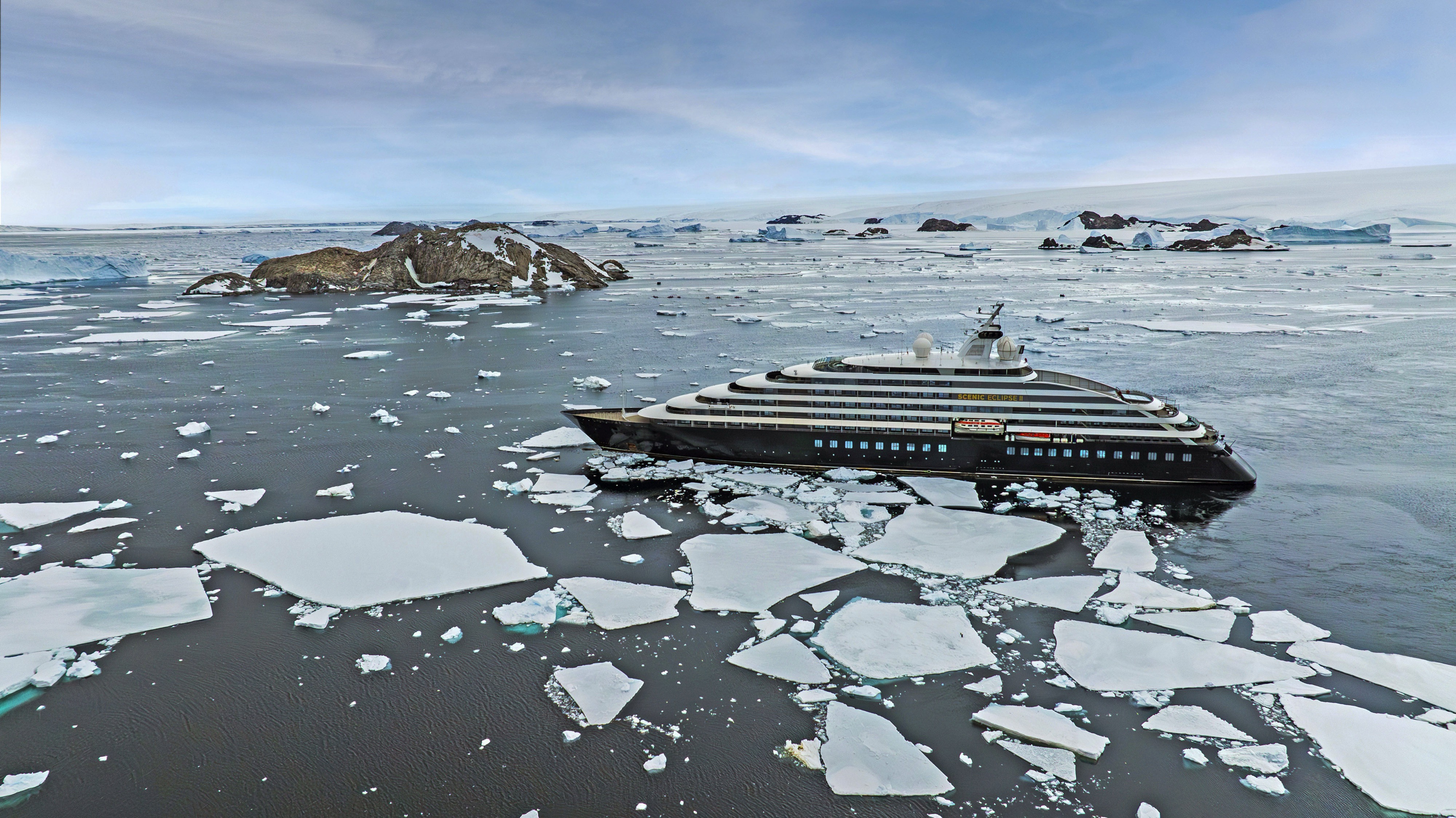
Ship Facts
| Launch Year | 2023 | ||||||||||
| Refit Year | |||||||||||
| Language | en-US | ||||||||||
| Gross Tonnage | 17545 | ||||||||||
| Length | 168 | ||||||||||
| Width | 22 | ||||||||||
| Currency | USD | ||||||||||
| Speed | 17 | ||||||||||
| Capacity | 228 | ||||||||||
| Crew Count | 176 | ||||||||||
| Deck Count | 8 | ||||||||||
| Cabin Count | 114 | ||||||||||
| Large Cabin Count | 0 | ||||||||||
| Wheelchair Cabin Count | 0 | ||||||||||
| Electrical Plugs |
|
Deck 10
- Sky Bar
- Sky Deck Vitality Pool
- Cabanas
- Elevator
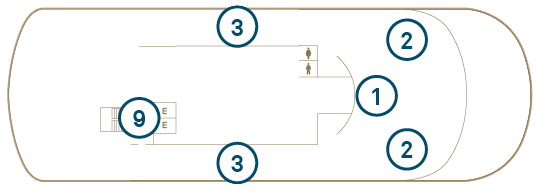
Deck 9
Owner's Penthouse Suite
- Two bedroom Penthouse Suite
- Spa Suite
- Elevator
- Helicopter Hangars
- Helipad

Deck 8
- Panorama Suite
- Spa Suite
- Grand Deluxe Verandah Suite
- Deluxe Verandah Suite
- Verandah Suite
- Helicopter Hangars
- Helipad
- Elevator

Deck 7
- Grand Deluxe Verandah Suite
- Deluxe Verandah Suite
- Verandah Suite
- Yacht Club
- Hanging Chairs
- Elevator
- Yoga & Pilates Room
- Gym & Fitness Area
- Wheelhouse

Deck 6
Grand Panorama Suite
- Grand Deluxe Verandah Suite
- Deluxe Verandah Suite
- Verandah Suite
- Elevator
- Spa Vitality Pool
- Senses Spa

Deck 5
Grand Deluxe Verandah Suite
- Deluxe Verandah Suite
- Verandah Suite
- Elevator
- Lumière
- Azure Bar & Café
- Scenic Épicure
- Observation Lounge & Library
- Observation Terrace
- Marina Entrance

Deck 4
Elevator
- Koko's
- Sushi & Sake Bar
- Chef's Table
- Elements
- Guest Services
- Scenic Lounge & Bar
- Boutique
- Theatre
- Discovery Lounge

Deck 3
Elevator
- Marina Entrance
- Guest Laundry
- Medical Centre
- Discovery Centre
- Tender Area

With an unrivalled range of dining experiences, be immersed in a multicultural culinary adventure. The impressive selection of cuisines and dining venues offer you a variety of choices that will satisfy everyone’s palate. Open galleys invite you to see first-hand the passion and expertise that goes into preparing every meal.
"Scenic Eclipse is the only ship to offer such an extensive à la carte spectrum, with so much flexibility and variety. Our menus reflect the talents of our chefs and the destinations we visit, and that’s really 100% unique." - Tom Goetter, VP Oceans Hotel Operations for Scenic Group.With up to 10 unique dining experiences featuring a range of flavours and cuisines, you can pick the setting to match your mood.
Dining and beverages curated to your tastes
- Culinary team of over 38 chefs from 15 countries
- More than 3,000 recipes in the menu repertoire curated to reflect the regions we sail in
- Locally sourced produce
- Delectable options to suit all dietary requirements - from gluten-free to vegetarian, vegan and more
- Premium selection of beverages available all day
- A range of over 100 premium Champagne, sparkling, red, white, rosé and dessert wines, with daily selections inspired by your destination
Elements
Chef's Table @ Elements
Koko's Asian Fusion
Night Market @ Koko's
Night Market @ Koko’s features a classic teppanyaki grill. Enjoy real interaction with the chef as he guides you on an inspired journey of the night market dishes from Asia, India and the Middle East, preparing dishes right in front of you. This experience is not the usual show you may envisage, where food is thrown and eggs cracked on the grill. Rather, it is an intimate dining experience for only eight guests and the chef. There are waiters continuously circulating with beverages and making sure the guests are well attended. Bookings are required for the Night Market @ Koko’s dining, located on Deck 4.
Sushi & Sake Bar @ Koko's
Azure Bar & Café
Lumière Restaurant & Champagne Bar
Yacht Club
Chef's Garden @ Épicure
In-Suite Dining
Private Dining Experiences
There are many intimate and relaxed venues which provide the option of private dining at no additional cost.
Groups can dine at a restaurant of their choice or in the privacy of their suite. Night Market @ Koko’s offers private dining for up to eight guests and Chef’s Table is the ultimate degustation dining by invitation-only experience for 10 guests.
Scenic Eclipse II takes ocean cruising to a whole new level of luxury and elegance. Your time on board will be one of world-class indulgence and absolute discovery. From the ultimate spa experience to the spacious lounges and bars, outdoor terraces, pool and jacuzzis, not to mention the theatre and of course your own private verandah, the luxurious wonders on board Scenic Eclipse never cease.
An Unrivalled Selection
Our expert bartenders are well-versed and equipped to mix up a variety of cocktails, from a traditional dry martini (shaken, not stirred if you wish) through to the latest trending concoctions. A comprehensive wine list has been curated by Master of Wine, Keith Isaac and sourced from around the world, representing a number of viticultural regions and wine styles. Equally, there is a thorough selection of top-shelf spirits, allowing you to choose your favourite gin, saké or from more than 100 varieties of whiskey. Relax and order from a wide range of truly all-inclusive beverages according to your mood and tastes.*
Freshly squeezed fruit juices, soft drinks and nonalcoholic beers are also included. Enjoy your favourite mocktail or sip on a warming brew from a range of specialty teas and illy coffees, all available whenever you please.
Settle in at any one of the nine spacious bars and lounges to enjoy your beverage of choice. Relish French champagne at Lumière’s Champagne Bar, indulge in an aged whiskey at the Scenic Lounge Bar, sip on a cocktail in your cabana near the Panorama Bar, or unwind in the Observation Lounge with a specialty tea. Fancy an aperitif as you admire the views from your private verandah, or a pinot noir with dinner? Complimentary beverages*, including those stocked in your mini-bar, are all part of our signature truly all-inclusive promise.
This impressive selection is available all day, every day – ensuring that a 6-star, ultra-luxury voyage on board Scenic Eclipse really is in a class of its own.
Observation Lounge
State-of-the-Art Theatre
Sky Bar
The Sky Bar can be found on Deck 10.
Sky Deck
The Sky Deck can be found on Deck 10.